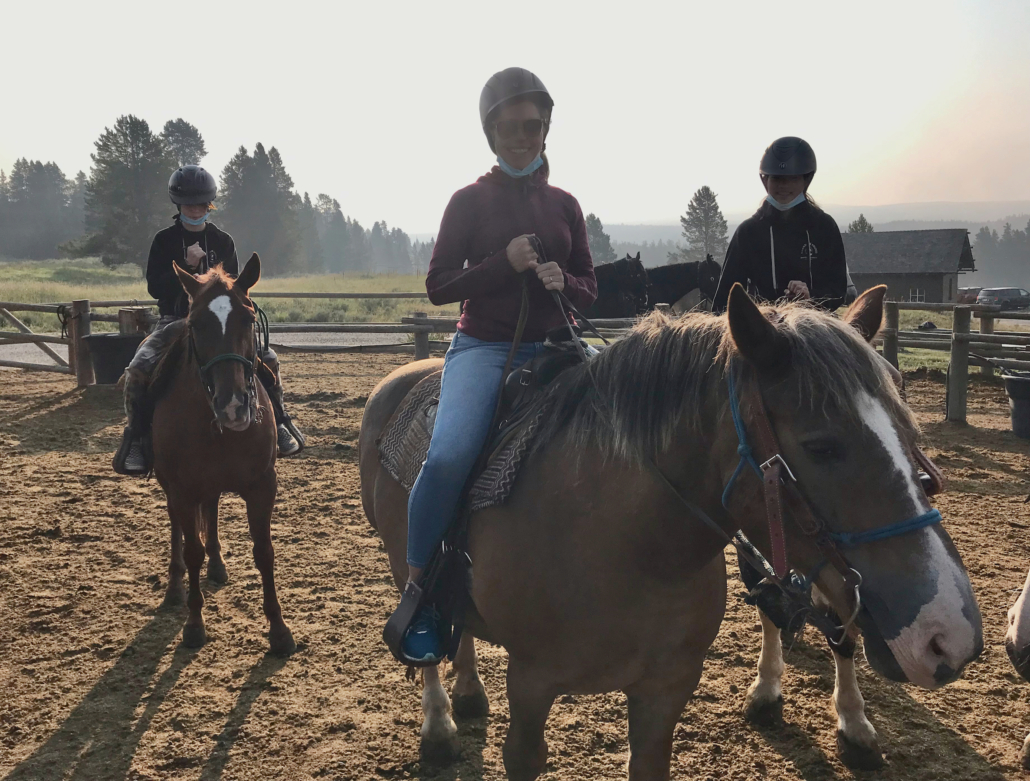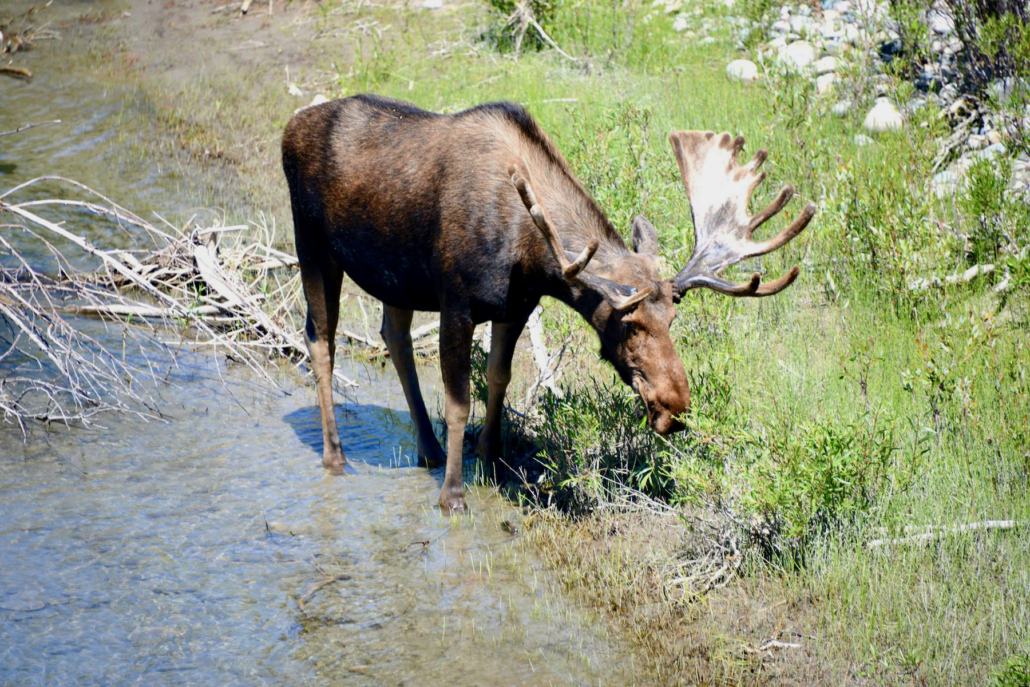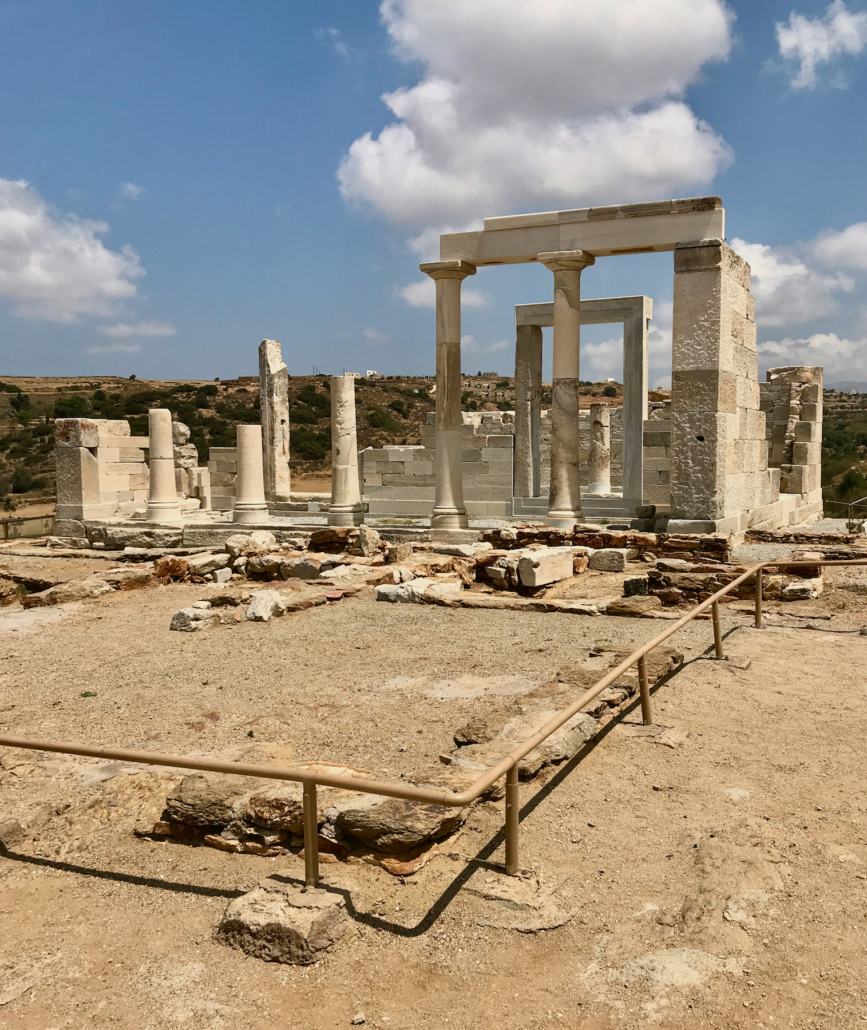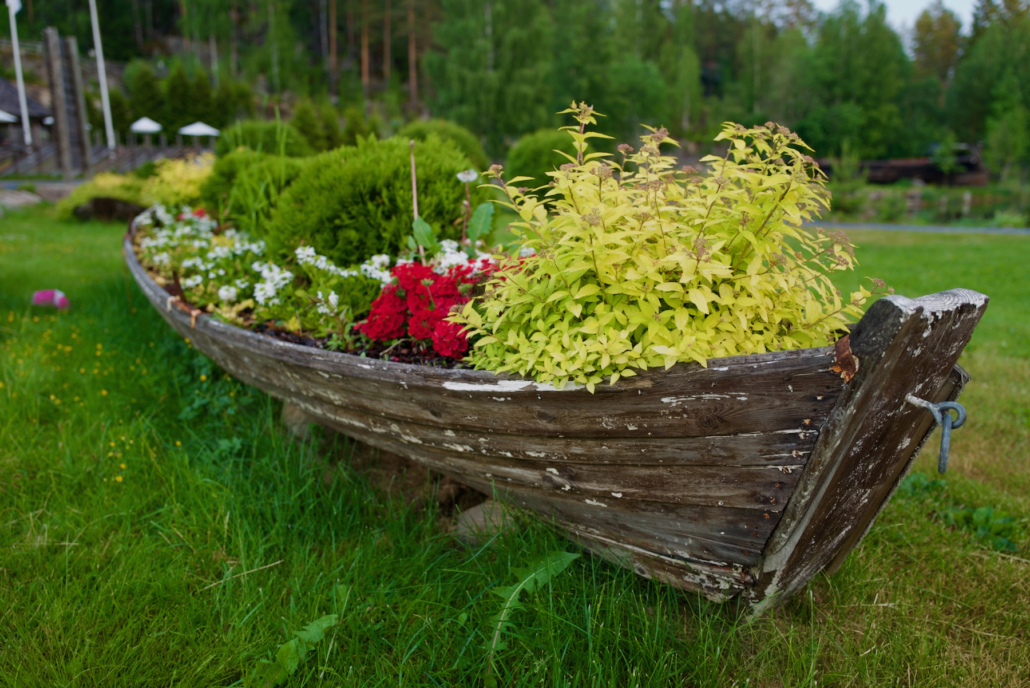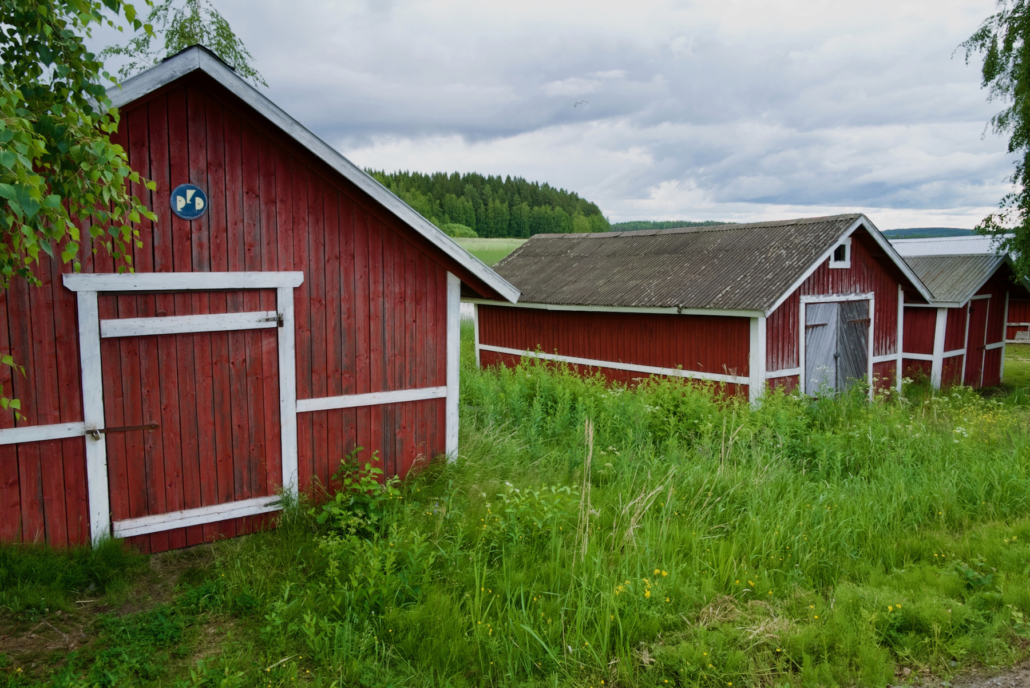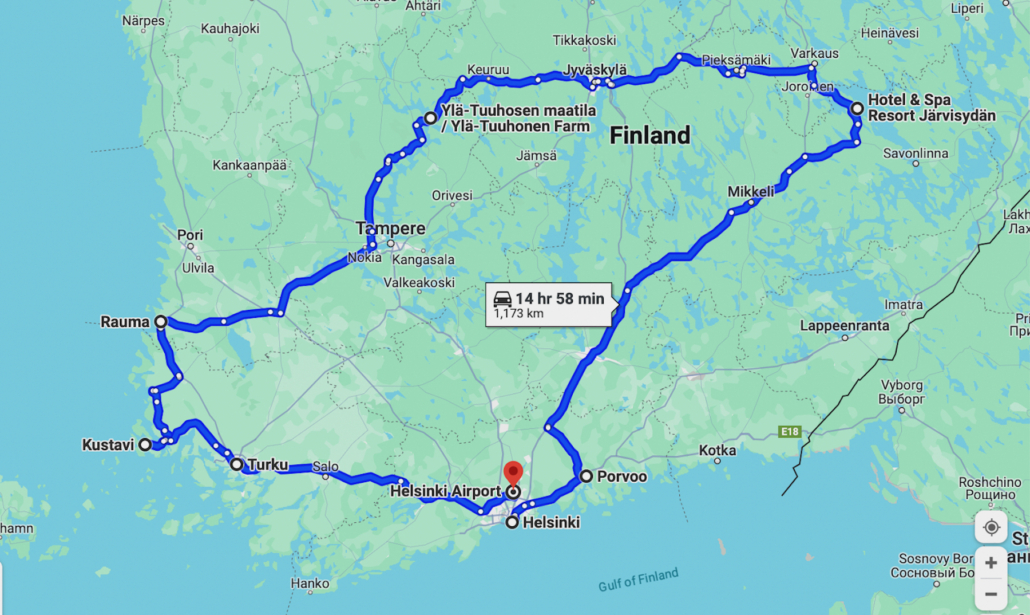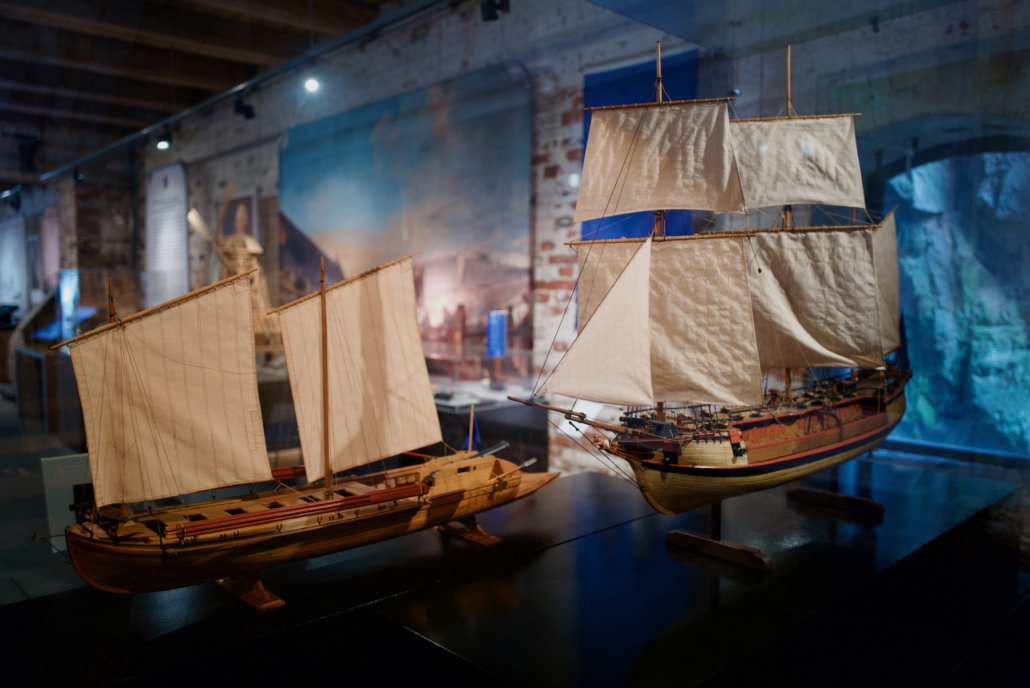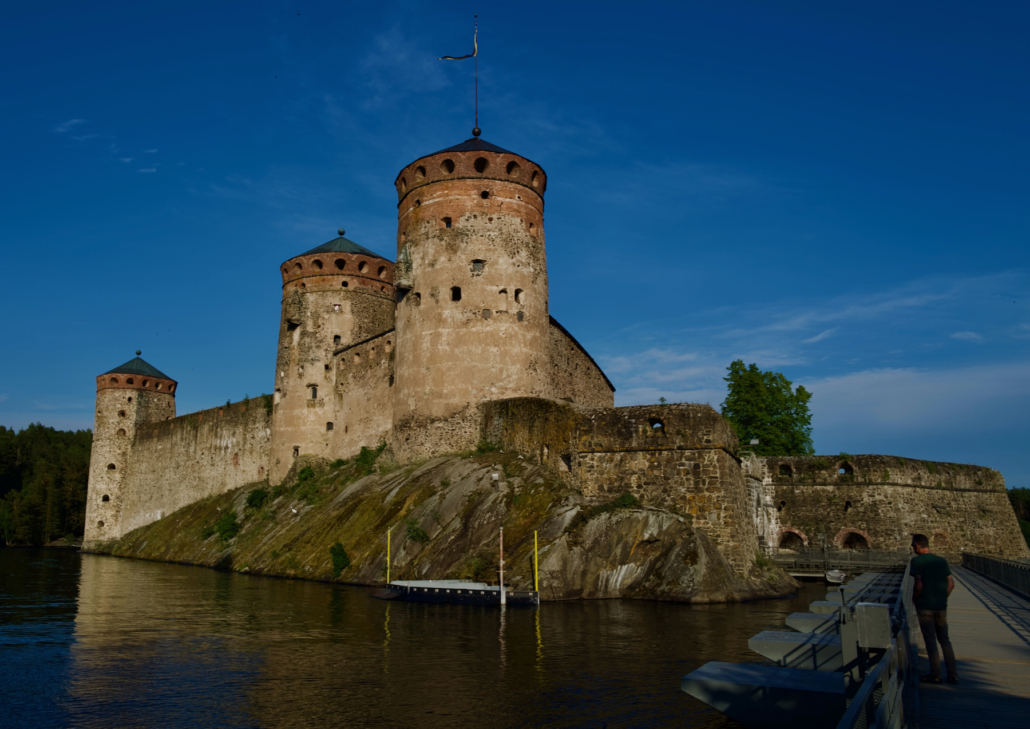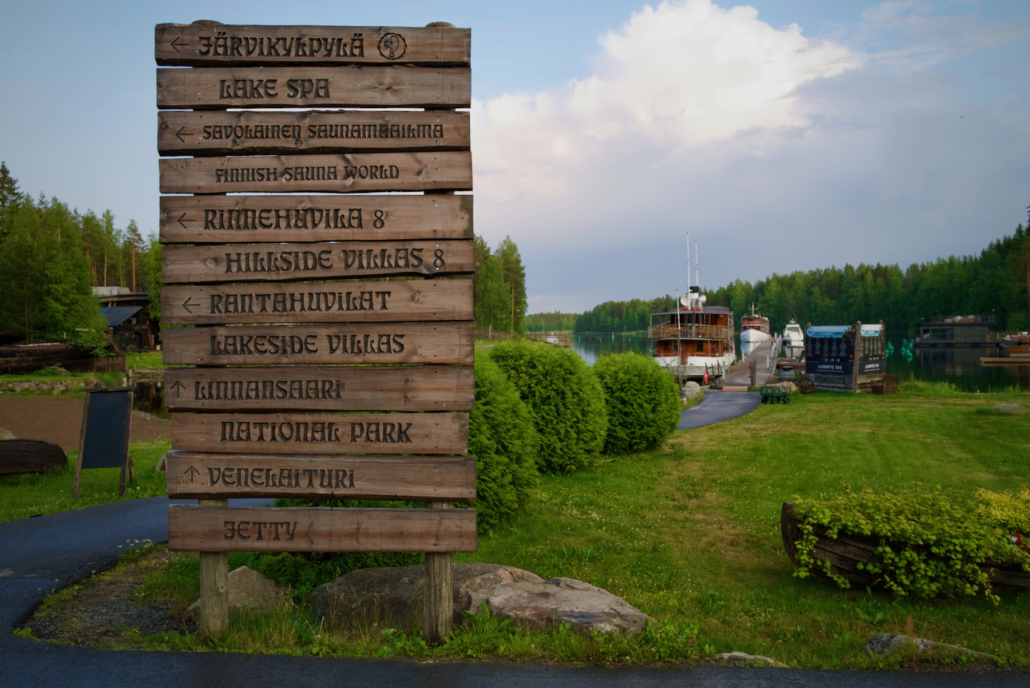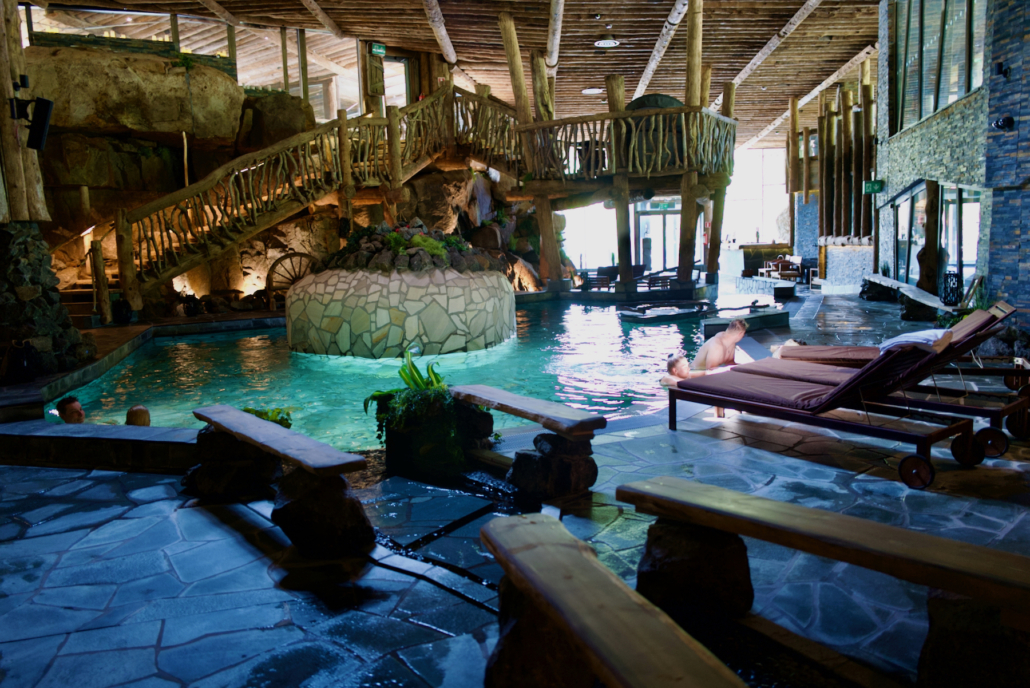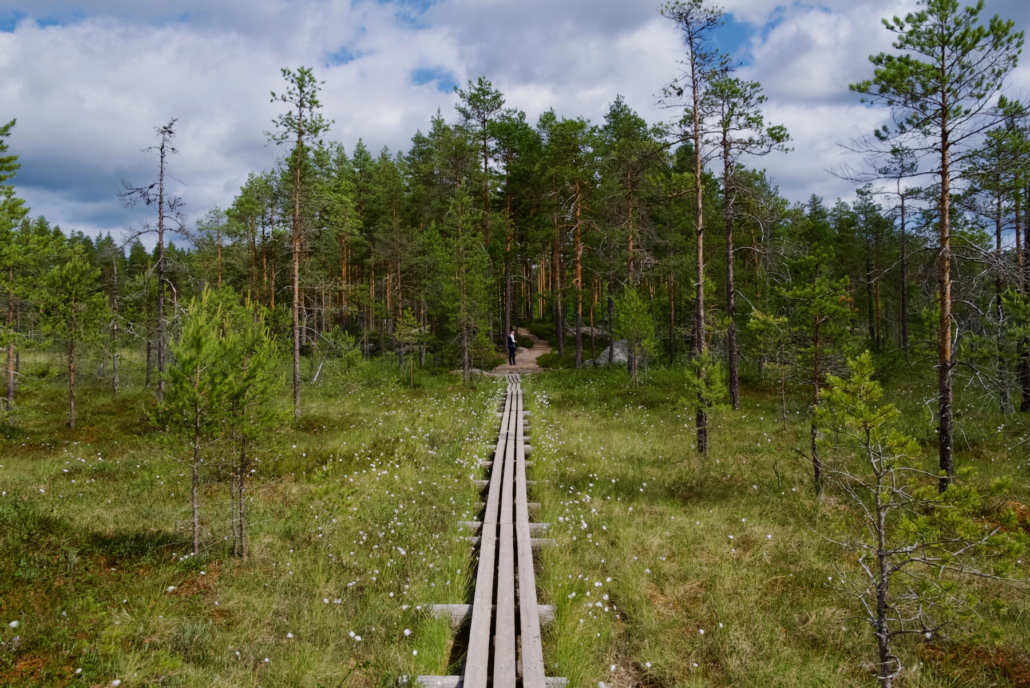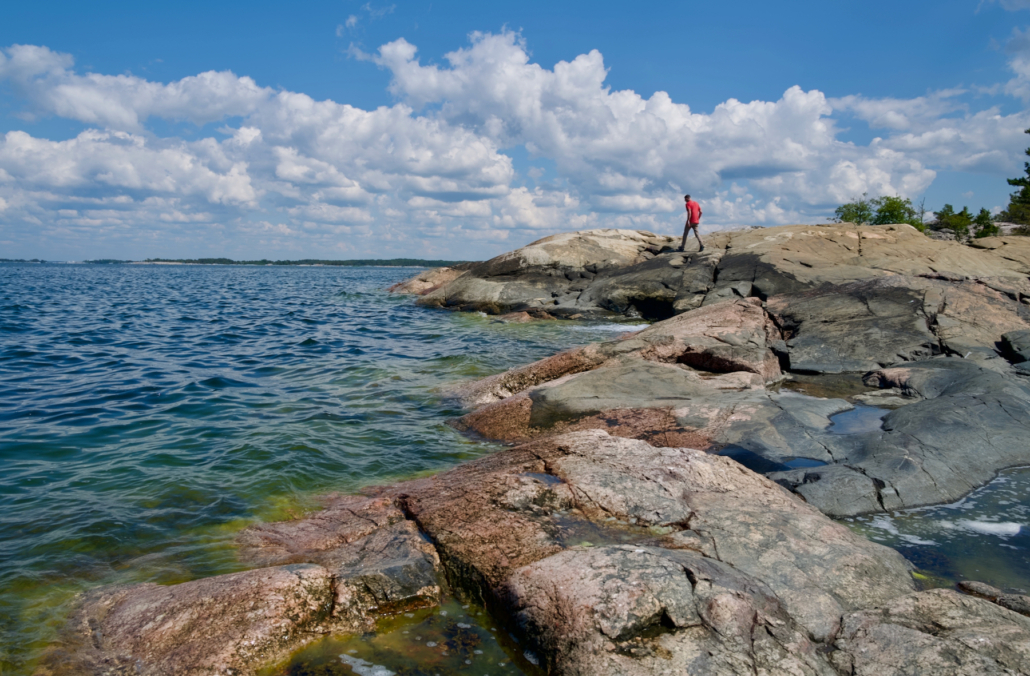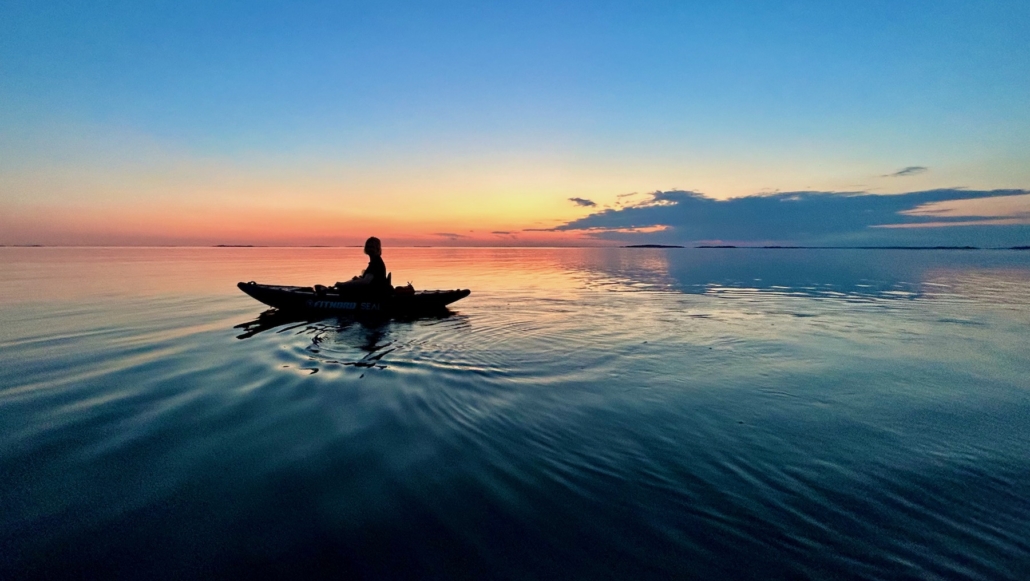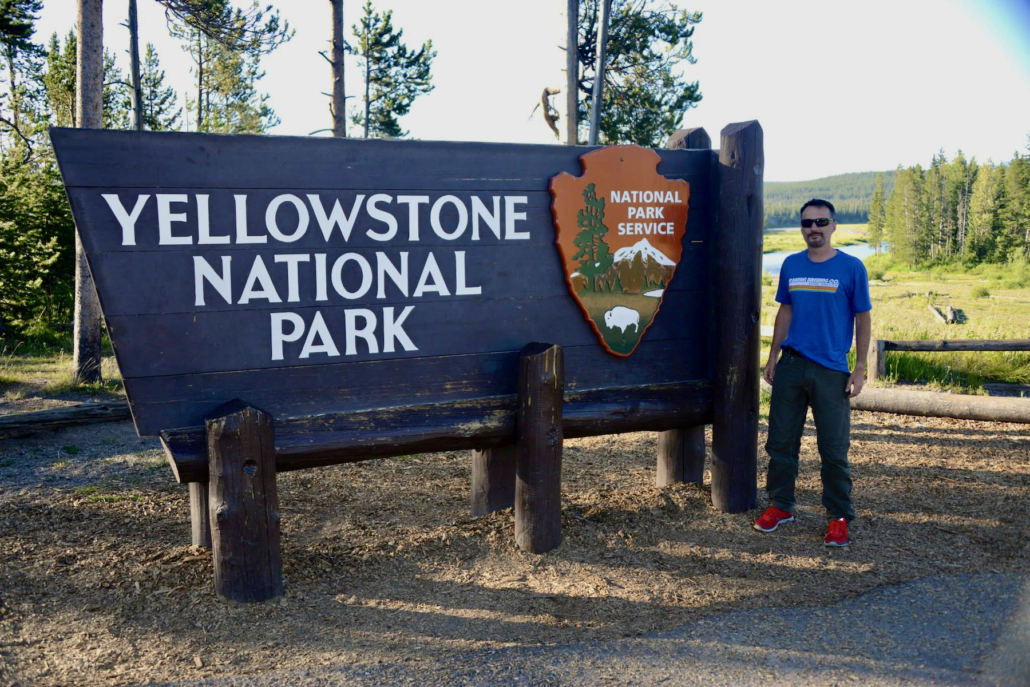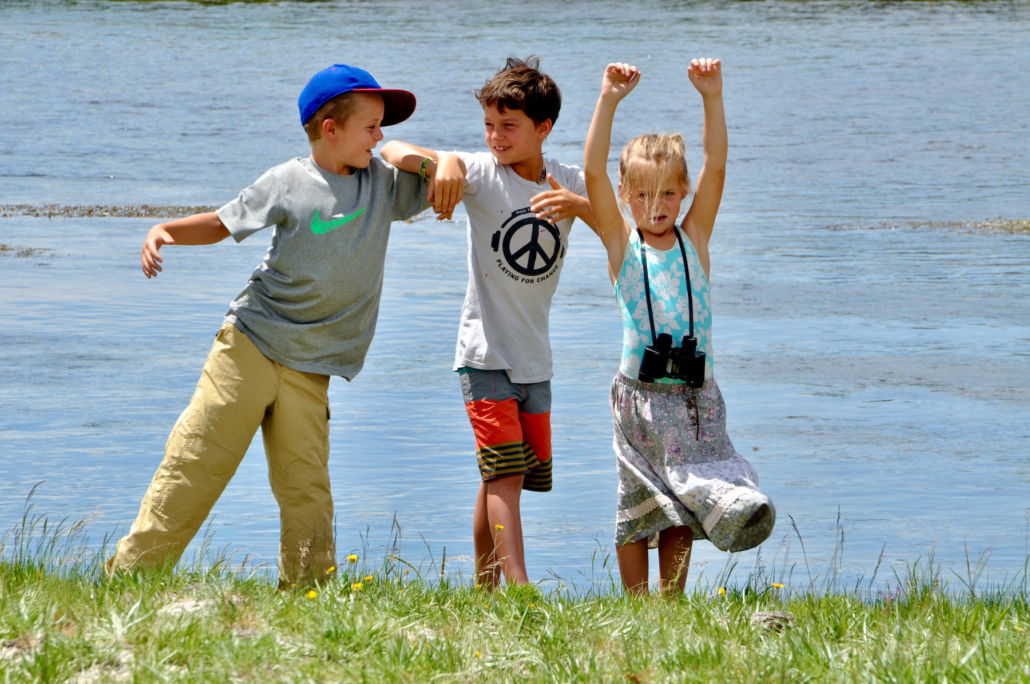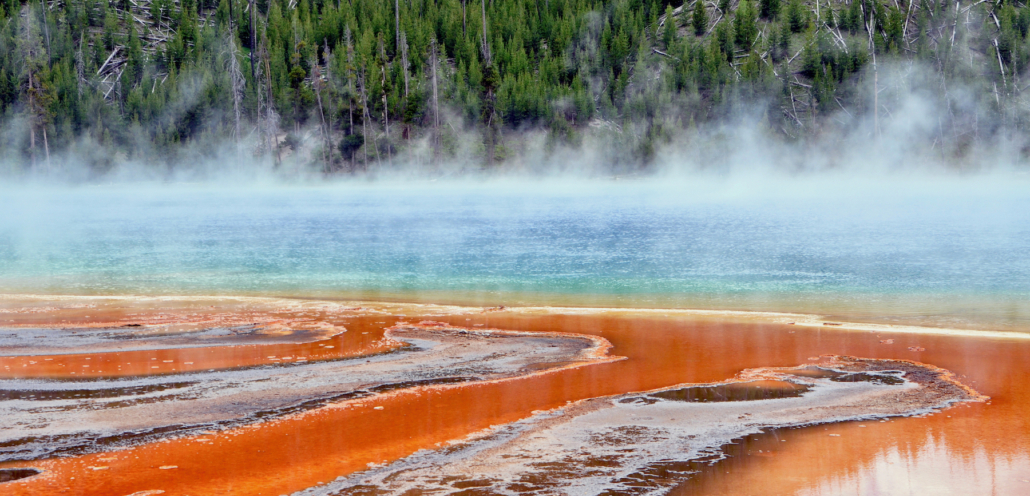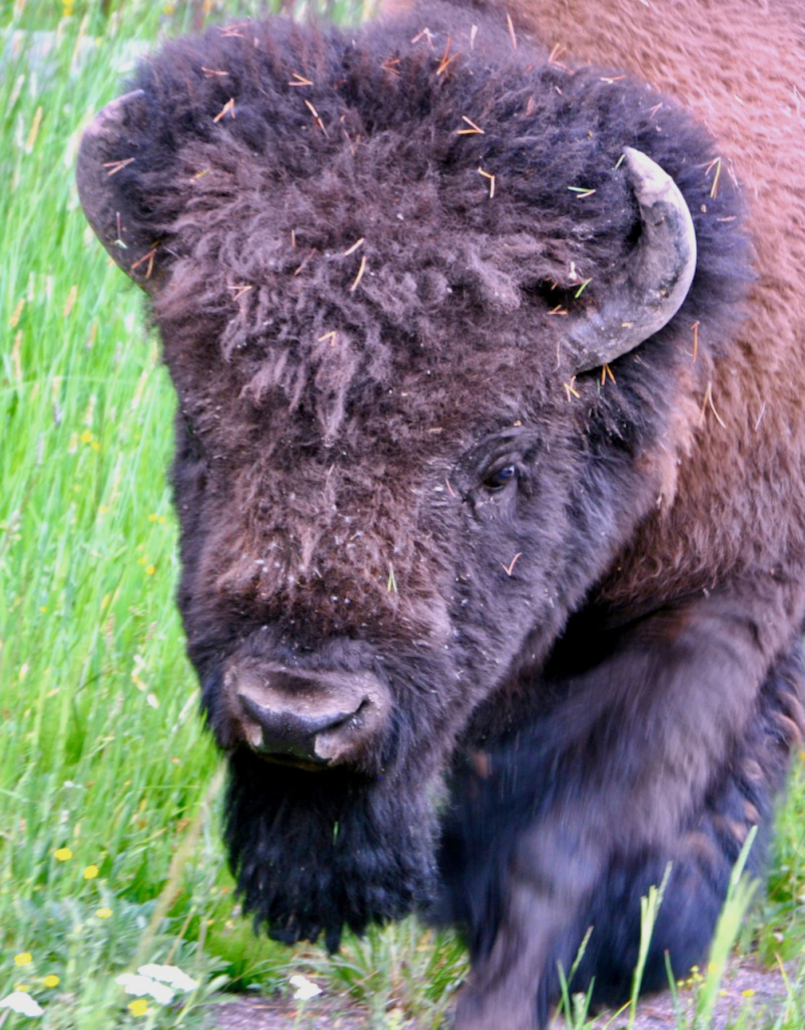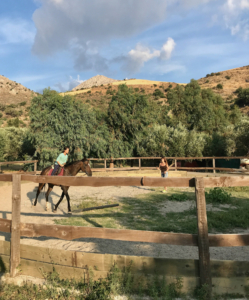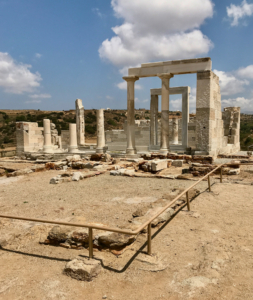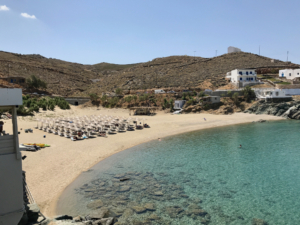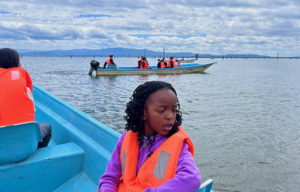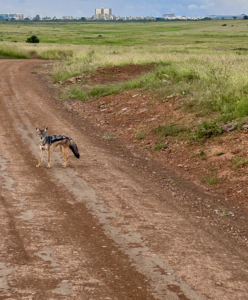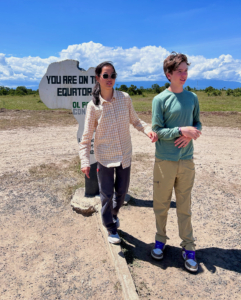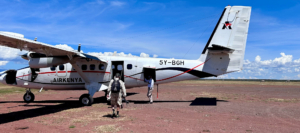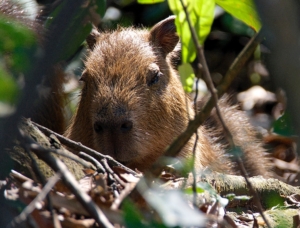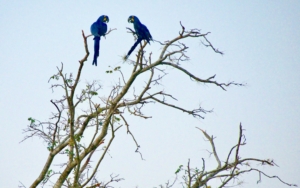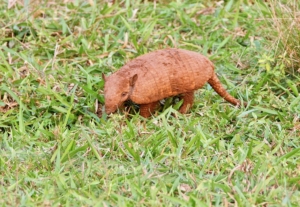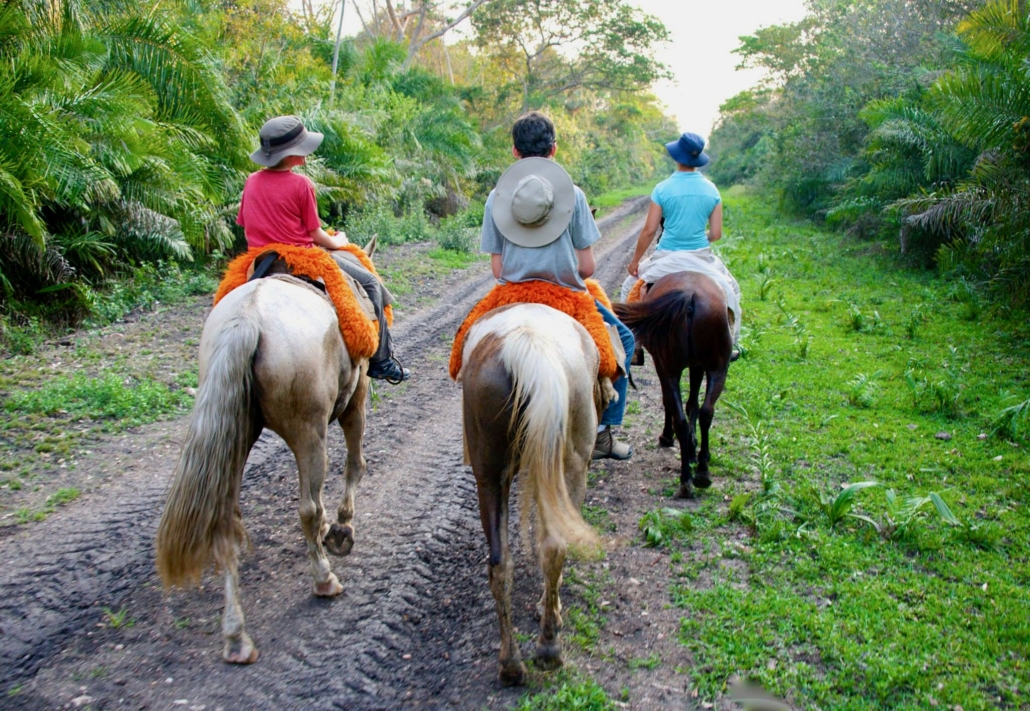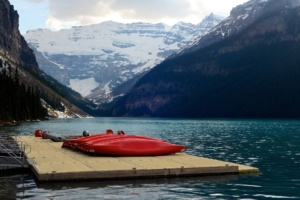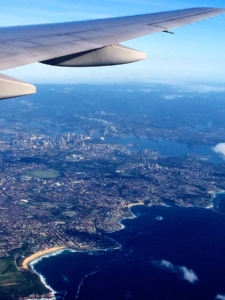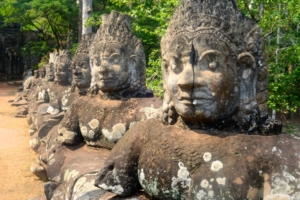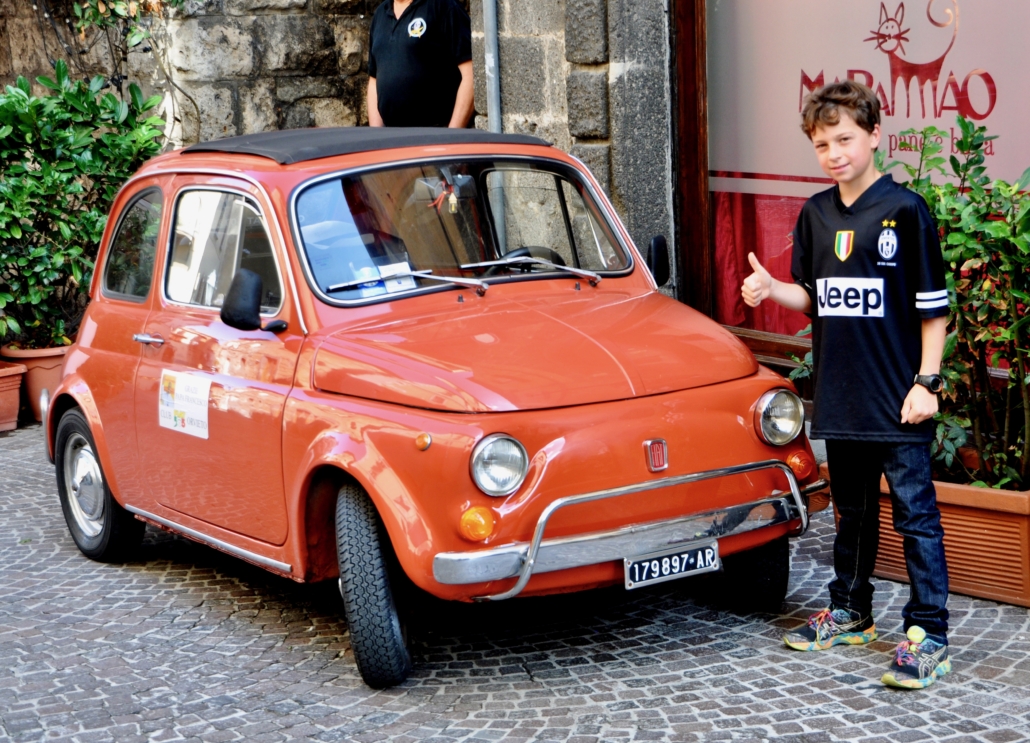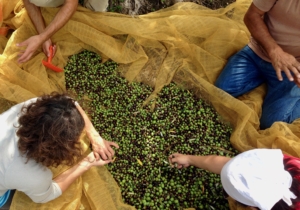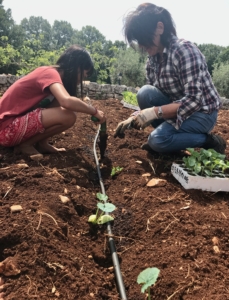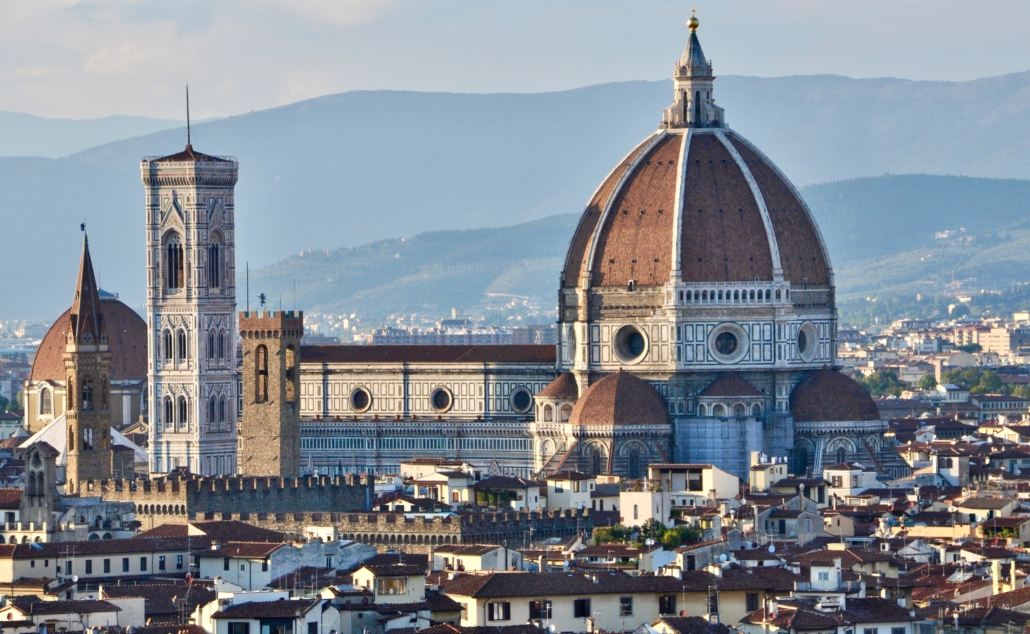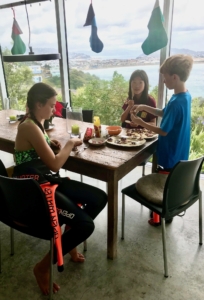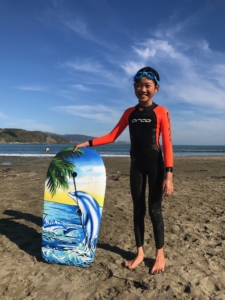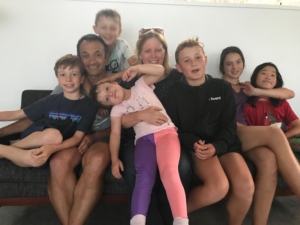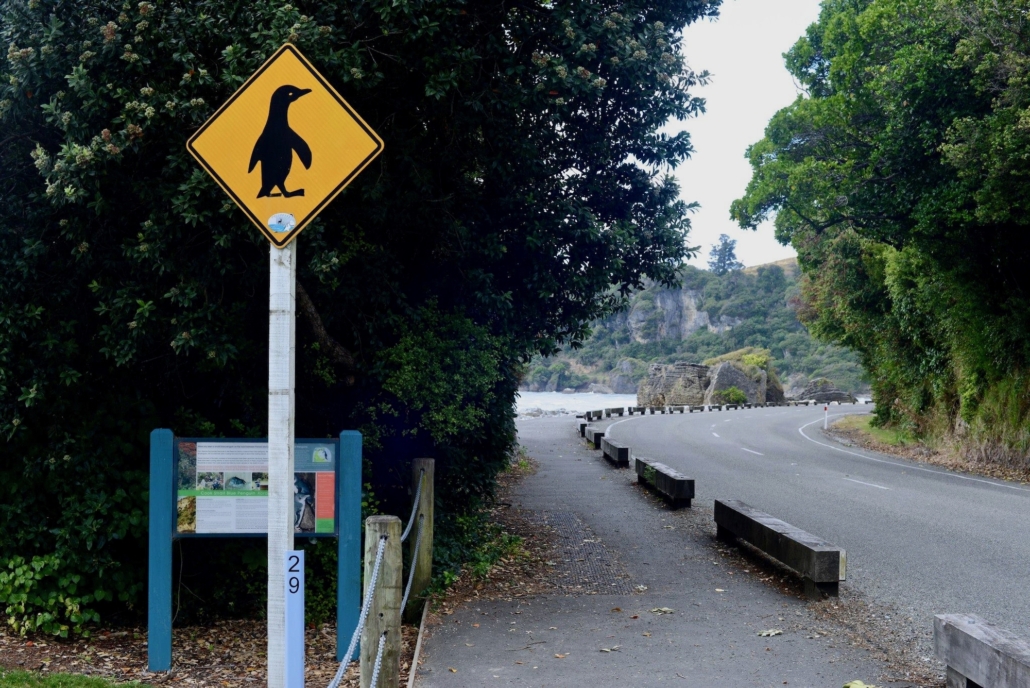The post Blog Roundup: Destinations appeared first on Wonder Year Travel.
]]>Here are some ideas to illustrate and inspire your decisions. These posts also offer ideas to make your travel time educational, family-friendly as well as suggestions for how to get off the beaten path. We hope this mashup of blogs helps plant a travel seed for you and yours.
US-based Destinations
If you know you want to stay in the US, you can’t go wrong with the US national parks. Many worldschooling families frame their trip around these beautiful, educational and low-cost destinations. We wrote about one of our authors’ love of Yellowstone and she shares a high level introduction to the park and its wonders. Then there’s Alaska, a place on many people’s bucket list. And here’s a blog about incorporating worldschooling education into a family outing to the Glen Canyon National Recreation Area.
Popular Family Destinations
These international places are often featured on social media and family itineraries for luscious reasons. All of these blogs are written by one of our authors who has been there with her family as a worldschooling destination. Costa Rica, home of Pura Vida, jungles, beaches, and volcanoes, is a great destination for its bounty of natural and cultural gems. Then there’s Italy, home of gelato, tiny cars, old cathedrals, olive groves, and bullet trains. Italia will give your family plenty of la dolce vita and history. Speaking of old, read about Greece, with its roots of democracy, mythology in motion, and Aegean paradise. If you’re tempted by Asia, Thailand is a wonderful first foray. Its ease of travel, friendly people, and beaches (seems to be a theme) will tick every box. And finally, Kenya, an English-speaking country full of diverse cultures, geography, and ease of travel in Africa, will leave you wanting to explore more. You will leave a better global citizen from safaris, snorkeling, and cutting-edge environmental practices.
Unexpected Destinations
These are a few unexpected and off-the-beaten-path destination inspirations sampled by our authors that are not common destinations. Consider adding them to your list for unique educational experiences. The Pantanal, located primarily in the Brazilian state of Mato Grosso do Sul, the Pantanal also crosses the border into Paraguay and Bolivia. At around 68,000 square miles – 20 times the size of the Everglades – it is the world’s largest tropical wetland area and largest flooded grassland savanna. And then there’s the quiet European destination of Finland, often called the happiest country on earth, with mild summer weather, northern lights, cold-plunging culture, and dense forests. Finland offers educational fun for the whole family.
We hope these destination inspiration blogs will assist and inspire your own family travels. From the US to Thailand, from well-known to the unexpected, may your travels make you closer and pique the curiosity in your whole family.
The post Blog Roundup: Destinations appeared first on Wonder Year Travel.
]]>The post Destination Inspiration: Finland appeared first on Wonder Year Travel.
]]>With its dense evergreen forests, 41 national parks, and over 180,000 lakes, Finland is a destination inspiration for nature-lovers. It also has intriguing, walkable cities that are lovely year-round and really come alive in the summertime. With so much for your family to explore in Finland, it may be difficult to figure out where to go, what to do, and how to start planning a trip. In this blog, we share information about a family road trip across four regions of Finland. We also offer travel tips, places to visit, and worldschooling ideas to help you discover Finland on a journey that works for your family.
Finland Tourism
Finland is a country of 5.5 million residents located by the Baltic Sea in northern Europe. Often recognized as “the happiest country in the world,” it is known for its excellent education system and healthy outdoor lifestyle. It is also a popular travel destination attracting an increasing number of families, solo travelers, students, and digital nomads.
Currently Finland is a less frequented destination for US-based travelers than the rest of Scandinavia and mainland EU. Among the Nordic countries, Finland still has the fewest visitors. Most come from Germany, followed by the UK, Sweden, and Estonia. Interestingly, despite the cold temperatures, visitors in wintertime tend to stay longer and spend more money per day on average than summer travelers because they book more tours and package trips. Much of Finland’s tourism is from the Finns themselves, who have increasingly chosen to travel domestically in recent years. According to Good News Finland, nearly ⅔ of Finns have regular use of a second home, either their own (58%!) or someone else’s. The rest of us might take note of how eager Finns are to spend time in their own backyard.
So might Finland be the new Iceland, a destination whose tourism has exploded over the last decade? That remains to be seen. According to a recent study by the Helsinki Tourism Foundation, Helsinki is lagging behind its regional compatriots such as Copenhagen and Oslo in terms of post-COVID tourism recovery and growth. Prior to the COVID pandemic, tourism accounted for about 2.7% of Finland’s GDP. After dropping to 1.4%, its rebound has been a bit slower than in other countries, but projections are that tourism will exceed 25 billion euros in 2025. In fact, airlines have recently been adding new flights and connections to Finnish cities after recording over half a million foreign visits to Finland in December 2023 alone.
When we visited Finland, it felt uncrowded, welcoming, and easy to navigate. Combined with its stunning landscapes, intriguing cultural destinations, and excellent infrastructure, now seems like a great time to visit before word gets all the way out.
Why We Chose to Visit Finland
As our kids get older, trips together are becoming less frequent and therefore all the more special. Finland was a unanimous choice for this journey, offering something for everyone–city nightlife, outdoor recreation, delicious food, and a relaxed vibe. Given our July timing, we also wanted to head for the outer latitudes in hopes of finding milder summer weather–in July, average temps in Finland range from 59-68°F, offering ideal conditions for outdoor adventures.
Late in our planning game, some friends decided to join us on the trip. We’ve traveled with them before and know we groove well together–they loved the road trip we’d scoped out, and only minor adjustments were needed so we could stay together at each accommodation. Our kids were definitely excited they’d have peers along. We traveled to Finland with older teens, but almost everything we experienced would be suitable and fun for younger kids, too.
Planning a Trip to Finland
Finland offers four distinct regions, from Helsinki in the south, Lakeland in the east, the Coast and Archipelago in the west/southwest, and Lapland in the north. Deciding where to go is linked to when you plan to visit and what you’d like to do. Winters are excellent everywhere for skiing, skating, and ice-swimming, and of course the season lasts longer in the north. Lapland is also known for its vast arctic wilderness and Santa Claus attractions. Spring and fall are best for catching the Northern Lights, and your chances increase as you head farther north. Fall is outstanding for foliage colors across Finland’s dense forests. Summer is known for extremely long days, cottage stays, abundant crops, water sports, and hiking, and the archipelago coast and lake regions are idyllic during this time. Finland’s larger cities have interesting things to do year-round, and of course, no matter when you go, sauna is always in season.
Most international visitors arrive in Helsinki, the capital city. Other major international airports in Finland include Turku, Rovaniemi, and Kittilä. Direct flights from the US can be difficult to find except from a few major east-coast cities, so travelers often need to connect via EU hubs such as Stockholm, London, or Frankfurt. Visitors can also arrive by boat from Sweden, Germany, Poland, and the Baltics, but the only options for arriving by car are via the Baltics ferries or by crossing from Sweden or Norway in the far north.
Booking.com–our favorite booking site–works well for Finnish city and lodge accommodations. For smaller venues, we needed to take a local angle and translate Finnish websites into English to find the best options. Speaking of the Finnish language, it’s not an easy one to catch onto quickly, but learning a few basics in advance is definitely helpful. Many but not all locals speak English, and everyone we met appreciated our attempts to converse. As usual, thank you goes a long way: “thank you” in Finnish is kiitos (KEE-tose), one of our favorite versions of gratitude ever! You basically sound like fellow Scandinavian Bjork whenever you say it properly.
A Sample Road Trip through Central and Southern Finland
Driving in Finland
One of our goals for this trip was to fly to a country and not fly again until returning home. We hoped for a meandering, low-key road trip where we could make spur-of-the-moment stops in small towns and at UNESCO World Heritage sites. Picking up our rental car from DiscoverCars as we departed downtown Helsinki was quick and convenient, and driving in the city was fairly straightforward. It became downright easy in the countryside, where good road conditions, clear signage, and sparse traffic made for low-stress days. Fuel was expensive, but the rental car companies offer primarily hybrid options as the default. Here’s our route as a reference, which we built for a max of 4-5 hour drive times between major stops.
For those who prefer not to rent a car but still want to go further afield, the extensive and reliable Finnish train and bus systems can help you reach most destinations. Check out the Perille service for transportation options, costs, and estimated environmental impact.
First Stop – Landing in Helsinki
As our flight destination city, Helsinki was a natural first stop. Other travelers may prefer to venture further on immediately, saving the departure city exploration for the end of their trip. But we’d had long journeys from Colorado and California and anticipated needing to rest and settle in.
Filled with parks, eclectic restaurants, picturesque ports, quirky museums, and public saunas, Helsinki was recently voted the most livable city in Europe for expats. We spent our time wandering its streets, checking out the architecture, visiting government buildings, and eating fantastic international food (Georgian at Rioni was a favorite). A stroll along the shaded paths of the Kaisaniemi Botanical Gardens provided a nice afternoon respite after checking out the Helsinki Art Museum, and everyone enjoyed the parks filled with summer crowds until late in the evening. Beyond the city we explored the island fortress of Suomenlinna and crossed the Gulf of Finland to visit Tallinn, Estonia–both full-day trips we found worth our time.
Helsinki was the only stop where we stayed at a traditional hotel. Given our need for two rooms (tall teenagers can no longer comfortably share a bed), Hotel U14 offered nicely designed family room combos–two hotel rooms connected by a small hallway with an additional, outer locked door, so we could feel both separate and together. We also wanted access to a front desk for late-night check-in, plus breakfast available on site as everyone’s schedules reset. Hotel U14 is where we learned about egg butter! My morning toast will never be the same.
Helsinki worldschooling ideas:
- Suomenlinna. This island fortress and UNESCO site has a fascinating history that includes Swedish, Russian, and Finnish eras. Take the passenger ferry to explore its footpaths, historical buildings, and six museums.
- Tallinn, Estonia. Book in advance for the 2.5-hour-each-way ferry (and maybe a napping cabin) to check out old town Tallinn and its fascinating KGB history.
- Seurasaari Open-Air Museum. You can find tours and events at this seasonal outdoor museum showcasing historic Finnish farmsteads, manors, and cottages.
Second Stop – Serene Nature in Lakeland
Ready to immerse ourselves in the much-touted Finnish wilderness, our next destination was Lakeland, northeast of Helsinki. An afternoon stop in the picturesque town of Porvoo along the way was fun for an outdoor lunch, bit of shopping, and a meander along the river famous for its row of red wooden houses. The onward drive dissolved the world into a palette of greens and blues, taking us through rolling countryside surrounded by increasingly dense woodlands and vast stretches of shimmering water as we approached Rantasalmi.
We stayed at Hotel and Spa Järvisydän, a unique destination property dating back to 1658. Noted on nearly every Finland travel blog, the property has been run continuously by the same family for 11 generations! Award-winning for its focus on sustainability, it seemed to be filled with Finns. Järvisydän offers many accommodation types, including hotel rooms, cottages, a boat, those Scandinavian igloos you’ve seen all over social media, and even what they call “birds nests.” We opted for its rustic family cabins. On site dining options were fine but not memorable, so it’s worth exploring beyond the property for some meals. Activities are plentiful, though, and include nature trails, bike rentals, cooking and craft classes, tours and fishing excursions. Our visit highlights included boating to Linnansaari National Park on Lake Saimaa and a long evening stroll in nearby Savonlinna. The onsite, family-friendly “spa” experience, which includes over a dozen pools, steam rooms, and saunas, is not as fancy as it sounds and is also not to be missed. We loved it so much we went twice.
Lakeland worldschooling ideas:
- Sauna. Lakeland Finland is one of the best regions to experience authentic Finnish sauna. Why is sauna so important to the country’s cultural history?
- Olavinlinna Castle. This well-preserved 15th century castle sits on a strait connecting two lakes and was the site of numerous battles.
- Saimaa Ringed Seals. One of the most endangered seals in the world, these ice-lovers can only be spotted on Lake Saimaa.
Third Stop – Farms and Parks in Central Finland
Our stay at Ylä-Tuuhonen Farm in Ruovesi gave us a chance to slow down and enjoy this quieter region. The farm offers verdant pastures, needle-covered hiking trails, a lapiz-colored lake with free canoes, and locally-grown food that was some of the best I’ve ever eaten. We visited during Midsummer, when the country closes down and everyone heads to their summer cottages to relax and celebrate. At the farm those celebrations included singing, flag-raising, and a special-occasion smoke sauna that took hours for the owners to prepare.
This is an excellent region for exploring some of Finland’s outstanding national parks. Basing in Ruovesi or a nearby town offers easy access to Helvetinjärvi National Park, Seitseminen National Park, and Isojärvi National Park. Each showcases canyons, woods, and trails for all skill levels–some on boardwalks hovering over the delicate landscape. In addition to the national parks you’ll find Siikaneva Swamp Nature Reserve, Ryövärinkuoppa Nature Reserve, and Juupajoki Gorge Nature Reserve. You may not need to pack a picnic, either–even the snack shops at the national parks had fantastic, healthy food. There’s simply so much natural “farm to table” here, no special advertising required.
Central Finland worldschooling ideas:
- Petäjävesi Old Church. Built in 1763-65, this ornately carved Nordic wooden church tells stories of everyday Finnish life across four centuries.
- Canyon geology. Use your proximity to Helvetinjärvi National Park to study the rocks that compose its canyons, plus the topography of the surrounding region.
- Midsummer. Midsummer is Finland’s main national holiday. The central region, dotted with thousands of lakeside cottages, is an excellent spot to read about its history and experience how people celebrate the holiday today.
Final Stop – Turku Archipelago
A seaside house in Kustavi, near the easternmost point of Finland, was our base in this region. This is where the locals go for a saltwater vacation, a fact we quickly discovered when trying to find a house to rent for two US families. Most properties are listed only on Finnish sites–the owner of ours said we were the only non-Finns he’d ever rented to, and he initially seemed quite apprehensive about it. The cabin he’d built by hand perched unobtrusively on rocks overlooking an inlet of the Baltic Sea and snugly accommodated our two families. Rocky coastline and thick forest–with the occasional moose passerby–surrounded the house, and nearby towns offered fresh food markets, cute cafes, charming marinas, and delicious ice cream shops. Many people visit this region to drive or cycle the Archipelago Trail–check out the loop map to help you decide where to base and visit.
In truth, we spent much of our time at the house. We grilled on the deck, played card games, basked in the pale nordic sun, and savored our final days together in Finland. A trip highlight was launching our kayaks toward a blurred horizon of pink and orange skies reflected in calm seas for a paddle under the midnight sun.
Turku archipelago worldschooling ideas:
- Rauma. Another UNESCO site, you can study the history and well-preserved architecture of one of the oldest harbors in Finland.
- Swedish trade. The archipelago offers a unique vantage point for studying the historical interplay and trade routes between Finland and Sweden.
- Turku Art Museum. Turku is a vibrant university city with abundant cultural offerings. Check out one of the most comprehensive art collections in Finland here, featuring both contemporary and iconic pieces.
Finland – To Be Continued…We Hope
Of the four main stops on our Finland journey, each of the four people in our family had a different favorite. Nowhere felt touristy, and the few other travelers we met were either Finns or visitors from nearby Russia. And although Finns have a reputation for being reserved, we found them universally kind and helpful, generously welcoming us into their homes and traditions. Our family fell hard for this beautiful country, and we hope to someday visit its mystical north in wintertime.
If you like this post, you might also like destination inspiration for Costa Rica, Yellowstone, The Pantanal, Thailand, Greece, and Alaska.
The post Destination Inspiration: Finland appeared first on Wonder Year Travel.
]]>The post Worldschooling in Yellowstone appeared first on Wonder Year Travel.
]]>Many traveling families already know that the 63 US national parks are packed with educational opportunities. Today, it’s easier than ever to incorporate national parks into your worldschooling curriculum. This blog looks closely at worldschooling in Yellowstone. Much of what is shared is generally applicable to other national parks, so consider this blog a Worldschooling 101: National Parks Edition.
Please note: this blog is not about where to camp, how to get reservations, how to avoid crowds in Yellowstone in July, or where’s the best place to see wolves. For that, please check out some of the resources and advice we offer at the end.
Ok, now back to the topic at hand: Worldschooling in Yellowstone. Worldschooling is learning through direct interaction with the world. It is an experience-rich, hands-on approach, informed by wherever you are and colored by the stories of whomever you meet. Worldschooling is 100% guaranteed to ignite curiosity and self-discovery in kids and adults alike.
Prepping for Your Worldschooling Adventure in Yellowstone National Park
Introduction to Yellowstone
Set the stage for your educational adventure by reading some books and looking at maps before you arrive. Try to get familiar with the park and its history. Yellowstone is enormous and has many different ecosystems and attractions. A little advance work will pique your interest and illuminate the subjects that most interest your family. The National Park Service has a dedicated website on using the park as a classroom and includes curriculum ideas for unlocking the magic of experiential learning. Check out some of these free instructional resources like exploring tracks and footprints.
Involving Your Kids
It’s great to involve your kids in planning your Yellowstone itinerary. Get them excited by watching a documentary about the park like this video from National Geographic or this Ken Burns production, The National Parks, America’s Best Idea. Or if you want to splurge, rent this gorgeous film about the National Parks Adventure, narrated by Robert Redford. It’s sure to fill your heart with wonder and humility as you learn how it is that these special places belong to all of us, forever.
Maybe start with some basic questions like why is the park is called Yellowstone? What’s the weather forecast for your trip? Maybe there is a question that is top of mind for you and your kids, like what’s the tallest geyser? Involving your kids early will prime the pump and get their buy-in for your family’s Yellowstone adventure. Check out this great blog for more ideas on ways to involve your kids in travel planning.
Yellowstone Visitor Centers
Another handy way to prepare is to visit at least one of the ten visitor centers around the park. They have excellent resources to help you get oriented, deepen your knowledge, secure permits (e.g., fishing or backcountry camping), and find out about special events. You can also take care of practical matters like using the restroom, filling up water bottles, and getting the lowdown on wildlife sightings. The Albright Visitor Center is open year-round and has free WiFi. Several visitor centers have special collections and resources dedicated to education. There’s also the Museum of the National Park Ranger housed in an old log cabin built in 1908. The museum is unique to Yellowstone and is staffed by retired rangers. Take your time, study the maps, talk to a ranger, and whatever you do, get acquainted with Yellowstone Forever, the park’s official nonprofit partner who also supports the amazing Junior Ranger Program.
Yellowstone Worldschooling Themes
With a little background information, you’ll be ready to pick some worldschooling themes to deepen your educational exploration. Here are a few ideas to get you started.
Wildlife of Yellowstone
Home to the greatest concentration of mammals in the contiguous United States, in Yellowstone you can learn about bison, wolves, elk, moose, pronghorn, and bears, to name a few. There are 300 species of birds and 16 species of fish. Dawn and dusk are the prime viewing times but seasonal variations will determine who you might see. Patience is key, and binoculars are a must. Maybe you’ll be lucky and unlucky and find yourselves stuck in a bison jam with hundreds of bison blocking the roadway! Bison were almost extinct. Today, there are about 3000-6000 bison in the park, a remarkable success story. The animals of Yellowstone are diverse, abundant, and sublime. There are many entry points into this rich topic for littles and big kids, like these wildlife bingo cards.
As worldschooling families, you may have time to deepen your wildlife inquiry. You might study the Yellowstone Bison Conservation Transfer Program (BCTP), which helps Tribal communities restore their bison population. You could take a closer look at wolf restoration in Yellowstone, a fascinating and complicated story layered with history, agriculture, biology, ecosystem health, wildlife management, and the relationship of people and the environment. If you are wolf lovers, try reading The Reign of Wolf 21, or any of the books by Rick McIntyre who has been observing wolf behavior in Yellowstone for over 40 years!
Geothermal Features of Yellowstone
Yellowstone is a hydrothermal wonderland and worldschooling families can easily create a whole curriculum around this topic. With over 10,000 features – geysers, mudpots, hot springs, and fumaroles (steam vents) – you can visit a wide variety throughout the park. This resource provides a good overview of what all that steam is! Maybe your kids can make a cool video comparing the different features, or interview guests to see how much they know about what’s going on underground. Why is there a funny smell? What makes the geysers erupt? If you are lucky enough to get to the Grand Prismatic Spring, plan ahead and take paper and crayons or something to draw with. The colors are extraordinary and it may be fun to sketch.
While it may be tempting to want to dip your toes, drop objects in, or get really close to the thermal features, it’s absolutely critical to understand and follow all safety precautions. Most importantly, visitors must stay on the boardwalks and trails and not touch thermal features or runoff. Swimming is strictly prohibited and pets are not allowed in thermal areas.
There is one area where you can swim in a cold river, then chillax in the warm eddies – the Firehole Swim area. It is fun to dip in this river, but definitely check the status and regulations before heading there because they are subject to change. Here’s more information about it.
Indigenous Peoples and Yellowstone
Another topic that may inform your Yellowstone worldschooling adventure is the history and traditions of Native Americans in the area. Thousands of years before there was a national park in this location, there were Indigenous people who hunted, gathered plants, fished, and had customary, spiritual, and medicinal uses of the waters. Today, twenty-six Tribes have some claim and cultural connection with the area of Yellowstone. This Smithsonian Magazine article provides a good overview of some of the archaeology and prehistory of the park. To go even deeper, you can check out this book by University of Montana archeology professor, Douglas MacDonald and learn about the trade in obsidian, one of the strongest toolstones in the world. Your worldschooling journey may lead you to the X-ray technology that is being used in the field and helping explain why obsidian was so important to Indigenous people.
Water and Yellowstone
Water water everywhere! According to the National Park Service, “Yellowstone contains some of the most significant, near-pristine aquatic ecosystems found in the United States.” It’s an understatement to say the waters of Yellowstone are a critical resource. Water is the underground pulse of all of the geyser and hot spring activity. It provides livelihood for the wildlife, farmers, ranchers, recreationists, and Indigenous people in the region. There are 150 named lakes, 258 named streams, and hundreds of waterfalls. Perhaps you could pick one water body and learn about the aquatic organism that live there. Maybe you could go fishing and use the opportunity to learn about native fish species like Yellowstone Cutthroat Trout and Artic Grayling. What mammals depend on the shallow surface water habitat found in Yellowstone? Check out this excellent short video on the Waters of Yellowstone or this website with excellent information about fish ecology.
Maybe you are interested in pollution and water quality. Talk with the rangers to find out if there’s an opportunity to participate in volunteer water quality monitoring work. Maybe you could spend a day in the field as citizen scientists, collecting water samples that help measure the effect of historic mining activity in the area. Or maybe you are interested in how climate change is affecting water resources in the Greater Yellowstone Ecosystem. What can you learn about changes in temperature, precipitation and snowpack?
There’s so much to drink up about water in Yellowstone, you could create an entire worldschooling curriculum that gives you an entry way into not only into science, but also math, history, social studies, and recreation management.
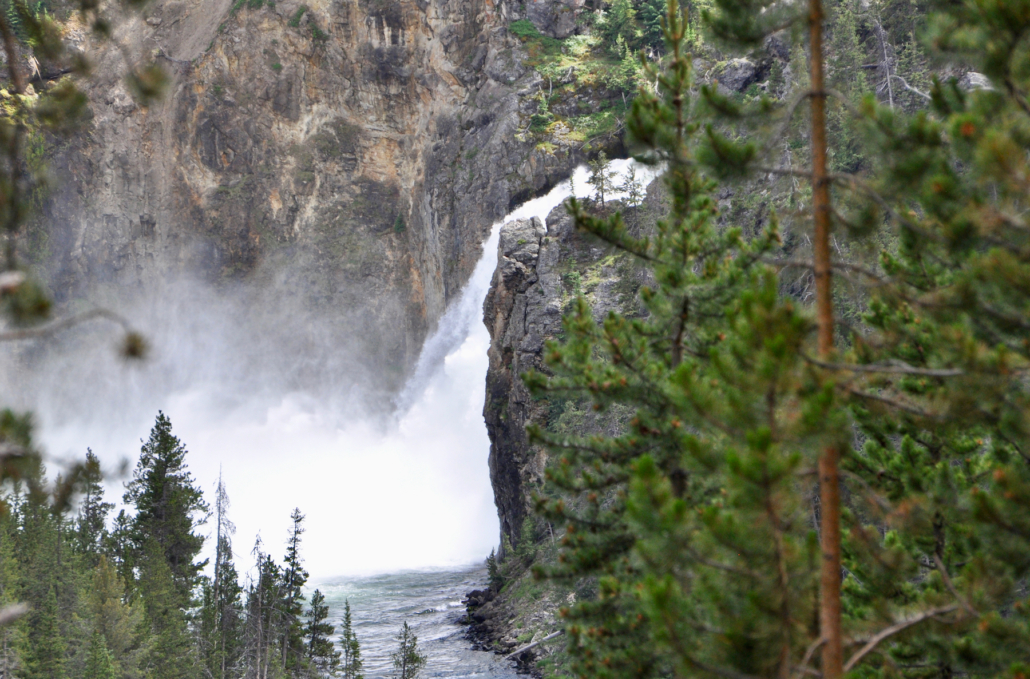
Cascading waterfalls on the mighty Yellowstone River helped carve the “Grand Canyon of Yellowstone.”
Policy and Public Land Management
Yet another theme may be policy and public land management. The National Park Service was created on August 25, 1916. Today there are more than 400 national park sites, over 560 national wildlife refuges, and nearly 250 million acres of other public lands. Maybe you are curious about what makes something a public land? Or maybe your crew is interested in knowing more about how a national park is designated or named, how wildfires are managed, why parks have nonprofit partner organizations, or who runs the concessions. What makes some national parks, like Yellowstone, a crown jewel?
Summers are especially fun to explore some of these questions, as the National Park Service celebrates its birthday on August 25. Everyone is invited to share how they feel connected to parks at #YourParkStory or #NPSbirthday. Check out the park service social channels for information about celebrations, educational events, and other ways to engage.
There are so many rich educational opportunities and worldschooling themes at Yellowstone National Park. As you start peeling back the layers and asking questions, you’ll uncover even more stories, more questions, and more shared educational adventures for your family.
Resources
Here’s a list of some additional educational resources to help ignite your curiosity and wonder and to help instill in your children a deep sense of responsibility for our beloved national parks:
- Junior Ranger – Self-guided educational journey for kids four and older. Booklet + ranger badge upon completion.
- Young Scientist – Self-guided science exploration in visitor centers and in the field. Booklet + badge upon completion.
- Yellowstone Sound Library – Collection of sounds for visitors to experience the aural landscape of the park.
- Yellowstone Video Library – An extraordinary collection of video clips second only to being out in it.
- Citizen Science – A publicly-funded program that uses crowdsourcing to engage ordinary citizens (you don’t have to be a scientist) in participatory and collaborative science. It’s a great worldschooling approach for the whole family to learn side by side.
- Yellowstone Forever – The official nonprofit partner of Yellowstone National Park Service that works to protect, preserve and enhance the park through a wide variety of programs.
- Guided Painting and Photography Trips – A list of contacts and organizations that offer hands-on painting and photography excursions in the park.
- Jobs, Internships and Volunteering in the Park – Information about paid experiences for youth and young adults.
- Ranger Program – Yellowstone’s in-park ranger programs are available from Memorial Day through September. The park also has an archive of past live Ranger talks.
Here are some additional resources to help plan your Yellowstone adventure:
- National Park Service planning Page.
- First Timers Guide to Yellowstone.
- Explore Yellowstone Like a Local Guidebook.
- Xanterra Parks and Recreation Website.
And, finally, here are three tips for dealing with crowds in Yellowstone:
- Visit in the off-season – And, if you love winter and can handle the cold, consider venturing into the park in the winter months. The grizzlies are hibernating but everyone else is awake. Mammoth Hot Springs Hotel and Cabins and Old Faithful Snow Lodge are open to guests! You can ski, snowshoe, and enjoy the bison and wolves, practically all to yourselves!
- If it works best for your situation to go in the summer, just embrace it. There’s a reason so many people go to Yellowstone. It’s AMAZING! So, share the wonder with the person to your left, to your right, in front of you, and behind you. The national parks are for all of us, forever. Accept and enjoy.
- Get off the beaten path – There are over 1000 miles of hiking trails and 293 designated backcountry campsites at Yellowstone.
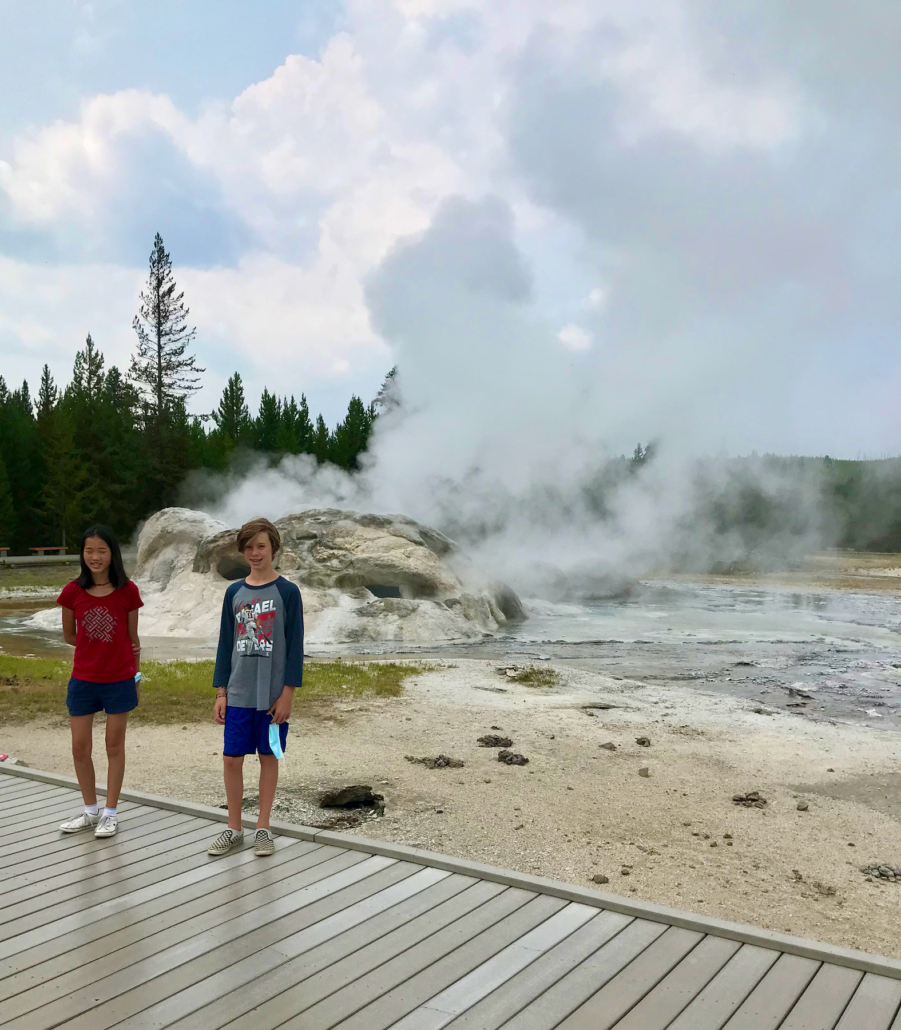
The post Worldschooling in Yellowstone appeared first on Wonder Year Travel.
]]>The post Destination Inspiration: Greece appeared first on Wonder Year Travel.
]]>Greece is Warm and Welcoming
Greece has many draws–history, food, Mediterranean Sea–without the crowds and prices you might find in other European locations. Greeks are known for their warm and welcoming nature, making it easy for worldschooling families to feel at home and integrate into local communities.
Of course, there are areas that have a high concentration of tourists, but my personal take is that Greeks are welcoming because they have not been overwhelmed by swarms of tourists. Once, on the island of Tinos, we stopped in a small village for lunch and a visit to the church. An old man in a fedora patted the empty chair next to him and offered me tea (or was it ouzo?). We giggled and gestured our way through a conversation. This openness was characteristic of the people we met everywhere.
THE FOOD
Greek cuisine is known for its delicious flavors and healthy ingredients. Children can learn about traditional cooking methods, local ingredients, and the importance of a balanced diet. As vegetarians, we found the Greek diet especially easy.
We especially enjoyed Greek salads, rusk salads, baked gigande beans, local fish, and octopus. Many areas also serve Middle Eastern staples like hummus and pita. Some memorable foods include pickled hyacinth bulbs, baklava (from an entire bakery that only made varieties of baklava), and fresh cheese. On the island of Naxos, we took a family-friendly food tour with Philema. We met candy makers and cheese makers and learned the ins and outs of pressing olive oil.
The History
Greece is steeped in history, with a cultural heritage that dates back thousands of years. Worldschooling in Greece offers the opportunity for children to explore ancient ruins, visit historical sites such as the Acropolis in Athens, and learn about famous philosophers, mythology, and the birthplace of Western civilization. The country is home to numerous archaeological sites, making it an ideal place for hands-on learning experiences. Partial reconstructions, active excavation, and computer generated modeling of ancient temples and cities make for inspired learning.
There’s also the small and humble chapels and sanctuaries that dot the hillsides. Even some three-thousand-year-old chapels are open for you to explore on a hike. Maybe say a prayer, enjoy the mosaic artwork, light some incense, and continue along your way.
For more current history, the nearby tragedies of the war in Syria and poverty of northern Africa have made their way to the shores of Greece. You will see recent immigrants and current events become real, prompting discussion and learning through empathy. And exposure may prompt action from near and far.
Greek Mythology and Kids are a Magical Mix
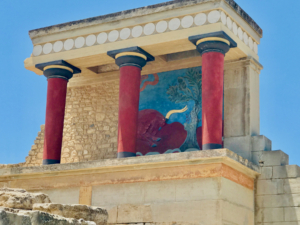
At the tour of Minos Palace on Crete, my kids shared the story of Minotaur, recounting it with wonder.
One of my three kids had studied ancient Greek mythology before we left. Her curiosity rubbed off on my younger two and we loved to study as much as we could. We read classic versions of the tales and even the Percy Jackson series (although not exactly traditionally correct) fanned the flames of passionate interest. Once, at King Minos’ palace on Crete, my third and fourth graders answered the guides’ questions and proceeded to regale their favorite stories to the tour group.
We visited temples built for the gods, wrote our own myths to explain natural phenomena with the gods as main characters, and recognized the symbols and stories we saw on murals and paintings throughout Rome, London, and other European cities. When exploring ruins, countrysides, and caves, the myths are palpable.
Natural Beauty
From picturesque islands with beautiful beaches to stunning mountains and charming villages, Greece offers a diverse range of landscapes. Worldschooling in Greece allows children to learn about geology, natural history, and environmental science firsthand. Greece offers various outdoor activities, such as hiking, swimming, and sailing. Children might gain a broader respect and love for the ecosystems of the Mediterranean.
From the islands to the interior mountains, from picturesque olive farms to pine forests, from views of the ocean floors to the snow-capped peaks, Greece offers it all.
Art and Culture
Greece has a rich artistic and musical heritage, and children can learn about traditional arts, crafts, and music through workshops and local events. Stone quarries, sculpture, and architecture might also play to your child’s interests.
Greek is a unique and ancient language with a fascinating history. The alphabet dates back to the eighth century BC and both Romance (Latin) and Cyrillic languages are based upon it. You might learn the sounds that are unfamiliar and then sound out items in the grocery store.
The Odyssey has been modified and abridged for all ages. For older travelers, they might read Homer’s original or immerse themselves in the works of Aristophanes, Euripides, or Sophocles.
Budget-Friendly
From our experience, Greece is less expensive than other Western European countries. Travel by ferry, short-term rentals, and off-peak travel (anything other than August) can drastically lower the costs for families. You can also choose lesser-known islands and destinations like the island of Tinos or the city of Thessaloniki. Santorini Dave is a website that is dedicated to everything you need to know to travel to and around Greece.
For all of these reasons, we hope you Greece becomes one of many destination inspirations for family travel!
The post Destination Inspiration: Greece appeared first on Wonder Year Travel.
]]>The post Destination Inspiration: Kenya appeared first on Wonder Year Travel.
]]>Environmental Solutions in Action
Kenya is an environmental inspiration. In 2017, they banned plastic bags, and you’ll see very little single-use plastic in the country. Many people walk, ride bikes, or use public transportation. There’s a lot the global north can learn from Kenya’s strong leadership on environmental issues. Kenya walks the talk.
Learn about Wangari Maathai, the first African woman to receive the Nobel Peace Prize. Maathai organized women’s groups to replant the deforested areas outside Nairobi. Kids can visit the forest and read more than six children’s picture books written about her life and contributions. Her activism united women’s rights with environmentalism.
Inspiring Animals!
Within Nairobi, you can see wild animals in the national park–including lions walking with skyscrapers in the background. Further afield, a Kenyan safari is magical. We landed at a conservancy north of the capital and, as our little plane touched down on the dirt runway, hundreds of zebras munched lazily. As we spent a week at two separate safari locations, we saw everything on our bucket list–lions, cheetahs, rhinos, warthogs, and hippos–as well as animals we didn’t know existed. Consider the spring hare: a nocturnal animal with a kangaroo’s hop, a rabbit’s ears, and a squirrel’s tail.
There is No Language Barrier
…Assuming your first language is English, that is. Although Kenya has dozens of languages, English is the official language and you can talk with just about anyone. From the Masai warriors to the Muslim communities on the coast, English is spoken here.
In our experience, Kenyans are friendly, curious, and kind. You’ll want to talk to everyone! The dialect has a different accent and vocabulary than North American English, so enjoy the difference. You just might have meaningful conversations and make life-long friends.
Great in Summer Months
Whereas Asia’s monsoon corresponds to the American summer vacation time, and crowds busy U.S. national parks, Kenya’s summer is an ideal time to visit. It was cooler than I expected. Even at the equator, I wanted my puffy jacket at night. It’s not the rainy season or the hot season, it’s just perfect 60-80 degree weather. Tourist attractions are not overwhelmed, plus the great migration begins in late June and July.
Diversity Inspiration
Kenya surprised me with its diversity. Tribes have by and large lived together peacefully for centuries. Each tribe has a unique language, dress, or other marker. For example, when we attended the wedding in Nairobi, one of the young groomsmen carried a walking stick or staff. He explained that it’s one of the symbols of his tribe and he carries it with pride to special events. There are 42 recognized tribes, and people of Indian descent are now considered one of them.
Most Kenyans are Christian, but there are also many Muslims, especially on the coast near Lamu or Mombhasa.
Safety and Ease of Travel
We felt safe the entire trip. In fact, when we were on safari with Porini camps, a Masai guard walked us to and from our tents after dark with a spear and someone born with the sense awareness only time in nature can grant. No one but trained military patrols or police are allowed to carry a gun. Not even on safari. I asked our guide one day when a rhino was huffing at our safari jeep. He laughed it off to say that rhinos don’t really want to hurt anyone and asked, “is it true that people misuse guns in your country?”
Kenya’s government is stable, the infrastructure and medical care advanced, and traveling within the country is easy and incredibly beautiful. Traffic in and out of Nairobi is similar to other capitals–changeable and congested. Direct flights to Europe and Dubai make connections easy.
With all these learning opportunities going for it, consider including Kenya on your international worldschooling itinerary. You won’t regret the decision. Instead, you might, like me, be plotting how you can return.
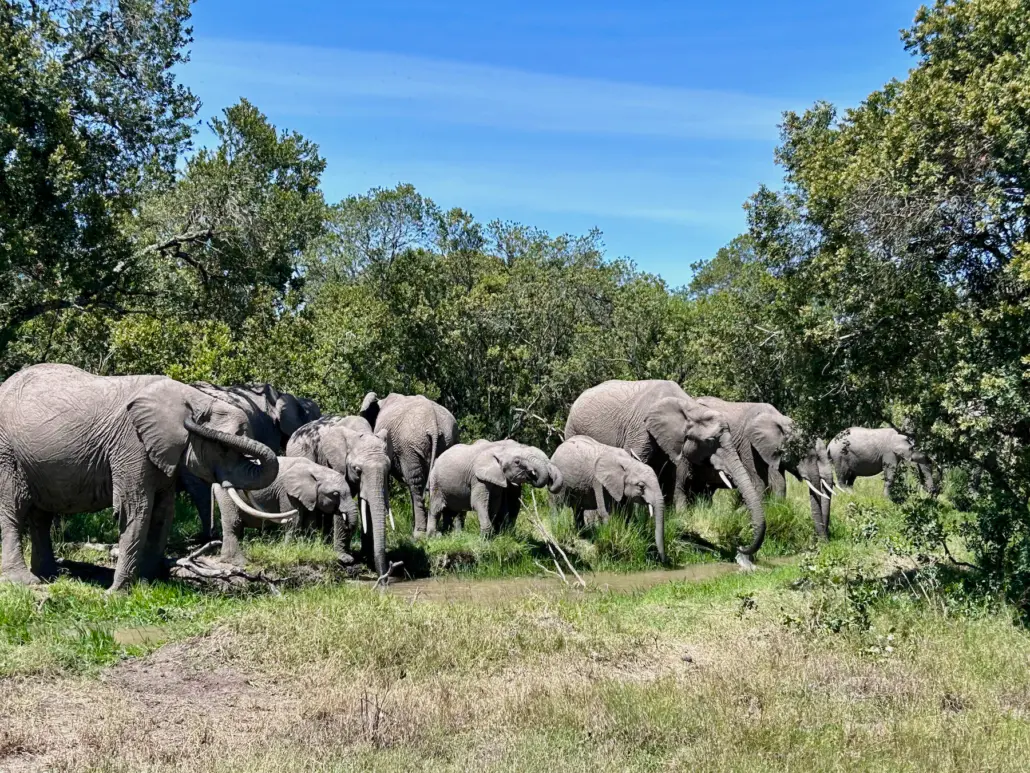
A group of elephants, otherwise known as a parade of elephants
The post Destination Inspiration: Kenya appeared first on Wonder Year Travel.
]]>The post Planning a Family Trip to Africa appeared first on Wonder Year Travel.
]]>Africa Is a Diverse Continent, Not a Country
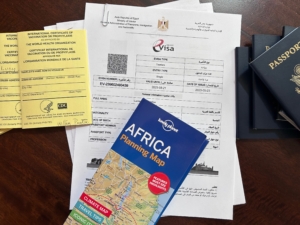
Shots and visas and passports, oh my!
When you browse the shelves of the travel sections, you might find a book on family travel in Tuscany or cycling through Vermont, books that hone in on the specific mode or geographical area. However, when it comes to African countries, they tend to be clumped in travel books that try to cover the entire continent. I can’t recall a guidebook that tries to cover all of Asia, but you do see guidebooks for the entirety of Africa.
I can only guess the cause of this different treatment: not enough travelers to warrant the specific country or regional guides? Ignorance that Africa is not a country but a diverse continent? Maybe a bit of each. Yes, you read that right: many Americans believe that Africa is a country, and many others can only name three or four countries on the continent. For this and many other reasons, African countries are prime for worldschooling opportunities
Our family’s go-to guidebooks are Lonely Planet, and they do have specific country guides to the two countries we will visit this summer.
Learn More Before You Go
The Global North and ChatGPT (yes, I’ve been playing around with it) have a lot to learn about Africa. As a credentialed social studies teacher, I’ve found that most American students learn about Ancient Egypt, colonization and the triangle trade, apartheid, and basic geography. Some newer textbooks include sections on ancient kingdoms of Ghana and Mali. So, there are huge gaps in how modern history is taught. One way to fill those gaps is to read some of these fantastic and award-winning books for young people to learn from this diverse continent.
For the younger reader
Black Gold by Laura Obuobi and London Ladd is one of my favorite picture books, as well as Water Hole Waiting by Jane Kurtz, co-authored with her brother Christopher Kurtz. The Anna Hibiscus early reader series by Atinuke, based in Nigeria, is wonderful. This depiction of extended family compound life and the relatable trials and tribulations of a young girl and her raucous younger brothers will begin to set context for modern life in Western Africa.
For middle school students
There are three books that detail the modern refugee. There’s the National Book Award-winning graphic novel, When Stars are Scattered by Victoria Jamieson, Omar Mohamed, and Iman Geddy; Long Walk to Water by Linda Sue Park; and Lost Girl Found by Laura DeLuca and Leah Bashoff.
For high schoolers and older
Older kids might appreciate Things Fall Apart by Chinua Achebe, or the nonfiction emigration story half set in Ethiopia, Cold, White Sun, by Sue Farrell Holler. Zimbabwean author Tsitsi Dangarengba has two wonderful and award-winning semi-autobiographical novels suitable for YA readers, Nervous Conditions and The Book of Not. Violet Bulawayo’s We Need New Names will also leave you changed. Trevor Noah’s Born A Crime is an insider’s look at race relations and growing up in South Africa. Available on audiobooks, his masterful telling would work well for PG-13 and above.
I’ve also found this wonderful booklist created and peer-reviewed by Social Justice Books.
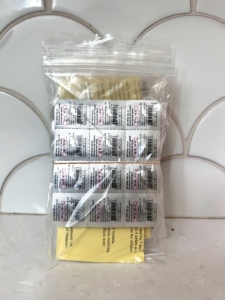
Can we enter with these Ziplocs?
Immunizations and Health
When we arrived at our local Passport Health travel clinic here in Colorado, we were presented with a long list of decisions. Malaria medication? The rabies series? Typhoid as pills or shots? This is a very different set of questions than you’d face for a trip to Europe, Australia, or Central America. When we told the nurse we would be staying in a suburb of Nairobi to attend a wedding, her eyes got wide. She offered us broad-spectrum probiotics, antibiotics to carry just in case, and digestive guards to take for the one week we were staying and eating in a smaller town that does not cater to Westerners. We then told her we would continue on to Egypt, she admonished us to not even THINK about swimming in the Nile. Schistosomiasis, she said. In all seriousness, she described snails that enter your skin and worms that penetrate your feet.
Many countries that have active Yellow Fever outbreaks require this vaccination both to enter and exit. I’ve never heard of anyone testing the system with a vaccine waiver, but I’d love to learn more.
These warnings might make some think twice about travel to Africa, but I look to Instagram and see families like the @traveling_zolks, @house_of_bey_family, @tinboxtraveller, and @awaywiththesteiners to ground myself in perspective here. I’ve also been to regions with similar health risks and realize that with some research and maintaining good health prior to arrival, most places are just fine to visit. Our stomachs are stronger than we think, and quick action if symptoms begin can head off most issues.
Credit Card Fraud and Entry Visas
Be sure to give yourself plenty of time to organize entry visas and make sure your credit cards will work. While I was trying to pay online for our entry visas, my bank kept declining the charges. After the third or fourth round, I needed to be on the phone with my credit card company to pay for the visas from the government website. These protections are put into place for good reason, I’m sure, but be aware that it’s imperative to let your credit card company know your travel plans and be ready for some extra calls while you’re planning your trip.
The Egyptian visa service warned of fraudulent sites that charge you high rates for fake visas.
[Update: the visa “service” we used was actually a scam! They were the first hit that came up on google, asked all the right questions, asked for new photos without glasses, and charged the correct amounts. At the final hour, when our service disappeared and we had no visas, our safari company pushed our new visa applications through. Check, check, check and do some online searches to make sure your service is legit.]
Visiting Wild Animals is Expensive
Once we decided to go to Kenya, I was shocked at the cost of the safari. The more I researched, the more I understood why you get what you pay for. The high cost of good safaris pays for the conservation of the wild spaces and animals.
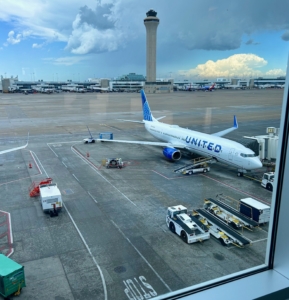
Planning done, the journey begins.
This privilege is confusing. Our Kenyan friends have never been to Masai Mara or the Sheldrick Elephant Orphanage just 30 minutes from their home. But if you look at any travel plan to Kenya, both places are in every list of top 5 things to do in Kenya. So, if Westerners didn’t come to pay the high prices, a key source of funding for care and conservation would dry up. But the high prices keep the locals from seeing their own country. What would you do?
I’ve been reading that African conservation areas were some of the hardest-hit places during COVID because most funding comes from tourism. So, although I’m still questioning my own ethics, we’ve decided to visit Sheldricks WITH our Kenyan friends and we are going to Ol Pejeta Rhino Preserve and Masai Mara after the dowry festivities. We will pay for mid-range safari camps with open eyes, try to understand how sustainable travel practices help preserve wild spaces, and look for ways to make this safari more inclusive.
Poverty and Economic Disparity
Africa, like many other parts of the world, can put the Western traveler face-to-face with economic disparities. Africa is home to some of the wealthiest individuals as well as some of the world’s poorest and fastest growing economies. Travelers are often surprised by the modern cities and high tech malls, as well as children begging with little on their backs. We are expecting our stereotypes to be challenged. We are researching some NGOs to visit, like Ubuntu Life, and will participate for the first time with Pack for a Purpose. We are ready to shake up our worldviews, break open our stereotypes, and ask some hard questions.
Packing
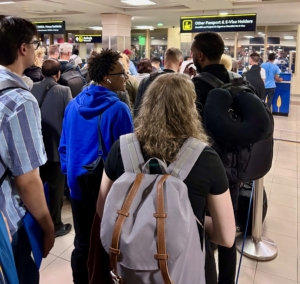
Sleepily arriving at passport control in Kenya.
Packing for this region has some unique considerations. I’ve read that wearing blue and black colors can attract the tsetse fly, which can harbor sleeping sickness and other health concerns. Bright colors, including white, can make the wild animals notice you and change their behavior. So, I guess there is a reason to wear that stereotypical khaki. A professional travel guide turned me on to Travel Fashion Girl website, which offers practical ideas like these to get you started.
You might need more warm layers than you think. Don’t assume you’ll be hot every second, as many wildlife viewing areas are at high altitude, and deserts get cool at night. Also, in many areas, especially Muslim regions, women need to cover shoulders, knees, and collar bones to be culturally sensitive. We are bringing scarves to cover our female heads for visits to holy sites, although I’m sure we can buy them there. In many more areas showing more skin can attract unwanted attention, not to mention a sunburn. We are currently hunting for breathable long sleeves and pants, and packable wide-brimmed hats.
Sometimes you also need to know what NOT to pack. Some of the world’s strictest bans on single use plastic are found in Africa. Rwanda and Kenya have luggage searches when you enter the country. Our safari company told us that they have heard of tourists being fined for bringing plastic bags into the country! Although we love and support the concept, I often travel with a few ziplocs around toiletries. Many other African countries, like Morocco and Tanzania, have partial bans and fines. I appreciate the exercise of rethinking these packing habits.
I can’t wait to share our journey to Kenya and Egypt real-time on social media and as stories from the road in this blog. Planning this trip to Africa is getting me more and more excited and interested in this diverse continent. Kenya and Egypt have long been on a someday bucket list, but an invitation to a dowry ceremony moves it to now, to once-in-a-lifetime, to “hang the cost” and we’ll figure out how to pay for it later. As a returned Wonder Year family, we’ve worldschooled and traveled to Central America, Asia, and Europe, but Africa, South America and Antarctica are still open for discovery. How easy will it be to slip into our old full-time traveling family personas? How different will it be to travel with older teens? How will this time in Africa change my worldview?
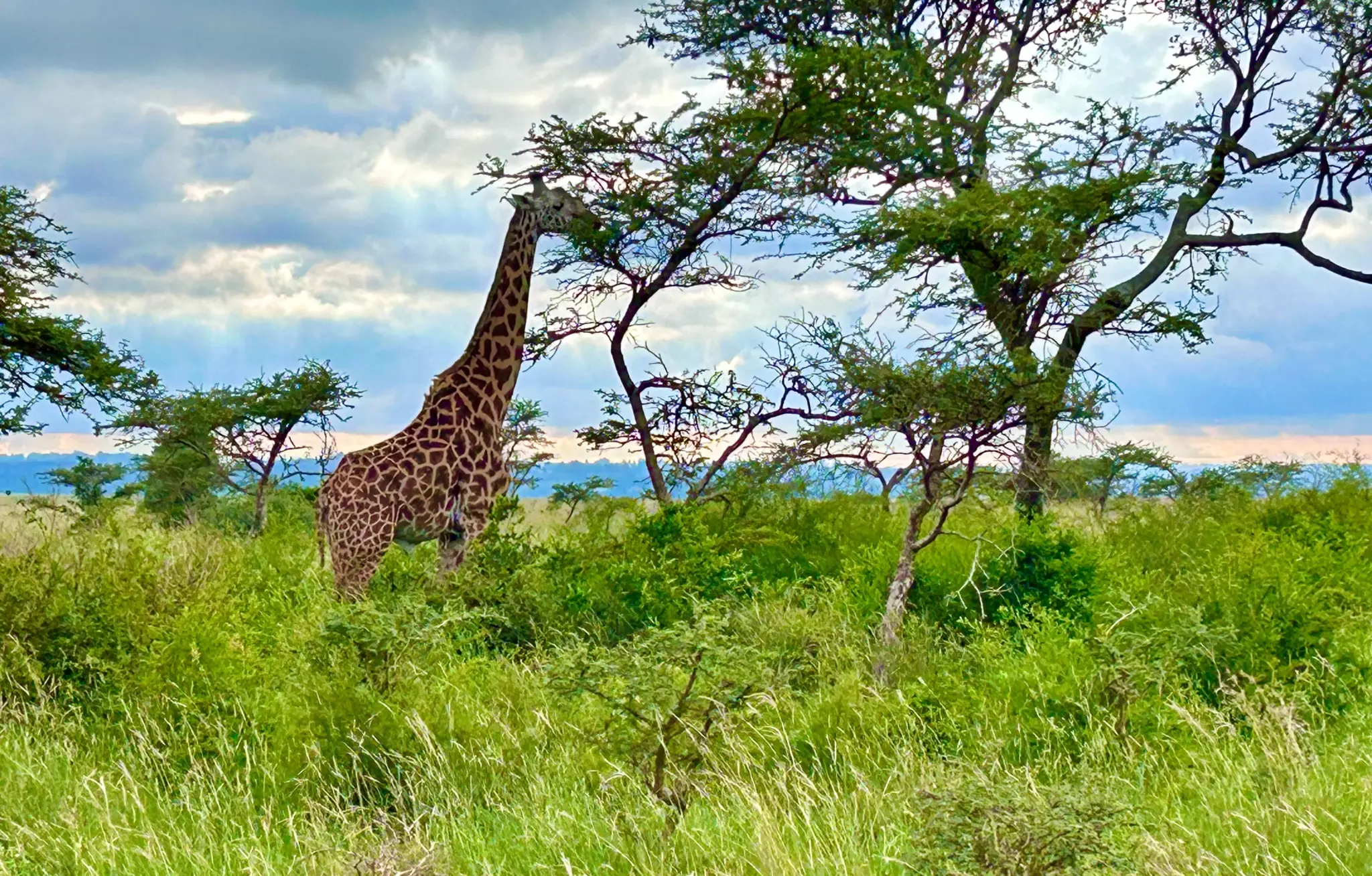
The post Planning a Family Trip to Africa appeared first on Wonder Year Travel.
]]>The post Destination Inspiration: The Pantanal appeared first on Wonder Year Travel.
]]>Behind the headliners of Rio de Janeiro and the Amazon lies what National Geographic calls Brazil’s best-kept secret: the Pantanal.
Located primarily in the Brazilian state of Mato Grosso do Sul, the Pantanal also crosses the border into Paraguay and Bolivia. At around 68,000 square miles – 20 times the size of the Everglades – it is the world’s largest tropical wetland area and largest flooded grassland savanna.
Getting there isn’t easy. Our family of four arrived at Campo Grande Airport via Rio de Janeiro then Sao Paulo, followed by another five hours by road to reach our pousada (inn). We visited in September, toward the end of the Pantanal’s dry season. The wet season, loosely corresponding to summer, has higher temperatures and humidity – and many more mosquitoes. Our timing was no accident, as the roads in the region are also more passable when the waters recede.
Some questioned why we were traveling with children into the region (ours were the only kids at the pousada). Still, we all found the area fascinating, with loads of worldschooling opportunities in the twists and turns of both waters and conversation. If you’re ever able to visit, you might study:
The climate and hydrodynamics that govern the region
The floodplain, fed by tropical rains and their runoff, is defined by seasonal shifts between phases of standing water and phases of dry soil. Water fluctuations between the phases range from two to five meters seasonally. Locals do their best to build structures above the high watermark, but we did see photos of past guests roaming the pousada grounds in shin-deep water.
Phenomenally diverse fauna
Over 260 species of fish, including stingrays and piranha, swim in the often-murky shallows. During the dry season, 650+ species of birds congregate around the remaining water sources. Our sightings included hyacinth macaws, toucans, crest-headed kingfishers, caracaras, savannah hawks, ibis, heron, jabiru, roseate spoonbills, and rheas. On land you might find anteaters, capybaras, anacondas (yes! saw a huge one!), jaguars (elusive! didn’t see any!), turtles, caiman, and armadillos. We particularly enjoyed the river otters: four feet long versus their smaller cousins back home, they are both quick and fierce.
Conservation dynamics
According to The Nature Conservancy, “The strategic location of the Pantanal makes it more vulnerable to the advance of large scale agriculture, cattle ranching, water pollution, dams and transport navigation, thereby increasing the pressure on the local habitats.” Despite being one of the most-preserved wetlands in the world, less than 2% is under federal protection. There’s much to learn about public and private initiatives aimed to guarantee its long-term sustainability. The Nature Conservancy (https://www.nature.org/en-us/get-involved/how-to-help/places-we-protect/pantanal/) and World Wildlife Fund (https://wwf.panda.org/wwf_news/?324090/Journey-of-Water-in-the-Pantanal) can help get you started.
If you’re planning travel to The Pantanal, here are some of our favorite resources:
- https://www.nationalgeographic.com/travel/article/exploring-pantanal-brazil
- https://www.nationalgeographic.com/travel/article/brazils-best-kept-secret-the-pantanal-wildlife-biodiversity-wetlands
- https://whc.unesco.org/en/list/999/
- https://www.pantanalescapes.com/about/about.html
- https://national-parks.org/brazil/pantanal-matogrossense
And if you have them, bring binoculars! You’ll likely use them here more than anywhere you’ve ever been.
The post Destination Inspiration: The Pantanal appeared first on Wonder Year Travel.
]]>The post Where Will You Go? Choosing Destinations for Worldschooling appeared first on Wonder Year Travel.
]]>VISIT WISH-LIST DESTINATIONS
What have you always wanted to see and experience? Do you have inspirational travel photos posted on your computer or fridge? Are there places that are just calling your name? Spin the globe. Choosing your worldschooling destinations is a great time to involve the whole family. Being curious about a place will make your kids all the more engaged once you’re there.
CHOOSE PLACES TO PRACTICE MULTILINGUALISM
You might plan some or all of your itinerary in order to learn a new language or reinforce a second or third one. Are your kids taking language classes at school and you’d love for them to converse with native speakers? Adults, too, may see great value in language immersion.
BUILD AROUND YOUR FAMILY’S FAVORITE ACTIVITIES
Think about how you like spending time as a family. Do you prefer being outdoors? Camping, biking, or trekking can drive an itinerary. Are you drawn to water? You might build your trip around kayaking, surfing, or diving hot spots. Maybe you are more of a big-city crew, with a love of museums and restaurants. Building in some of your family’s favorite activities can help keep everyone engaged.
CONSIDER NATURAL SEASONS AND CULTURAL EVENTS
Research the best time of year to visit your high-priority destinations. Some places will work any time of the year; others might have peak times for desirable weather conditions or seasonal flora or fauna: wet or dry salt flats in Bolivia, butterflies returning to San Juan Capistrano, monsoon seasons in Southeast Asia, or the fall foliage in New England. You can choose worldschooling destination to coincide with festivals, events, or cultural celebrations you want to attend, such as the Thai New Year celebration water fights or Day of the Dead happenings in Oaxaca. Prioritize key events and anchor your trip around their locations.
CHOOSE SUSTAINABLE TRAVEL
The choices we make about travel—destinations, transportation, accommodations, and even souvenirs—have an impact on the local environment and people. Asking questions and being aware of how our presence in a place affects the local community is a responsibility we can all embrace. And it’s not just about doing the right thing; many travelers note that their most memorable experiences had a strong local flavor. What a great way to embed critical thinking into your journey: choose worldschooling destinations that have positive impact.
TRAVEL TO FIND COMMUNITY
More Wonder Year families are arranging their itineraries so they can connect with other traveling families at schools, summits, hubs, pop-ups, and informal gatherings. Sparks fly when worldschooling kids connect with each other!
OTHER LENSES FOR CHOOSING DESTINATIONS
Here are some other ways you might create your itinerary:
- Around homestays, home swaps, or volunteerism
- Via around-the-world air travel, which often requires that you travel in only one direction: east or west
- Off-season all the way to maximize easier bookings, lower costs, and fewer crowds. One downside: you may find accommodations, sites, restaurants, and tours closed for the season, or you may encounter construction and repairs underway.
- Country collecting: some travelers want to visit as many countries as possible. Just make sure you keep it meaningful by taking time to really appreciate the local people, places, and culture.
- By theme: you may wish to choose a worldschooling theme, such as historical events or interesting flora and fauna, as you go.
- Educational programs: alternative schools, experiential programs, and immersive experiences geared toward worldschoolers are rapidly proliferating, offering families the opportunity to enroll their children and build itineraries around their attendance.
- Personal history or connection: some families like to visit their ancestral homes or retrace their forebears’ migration paths.
- Friends and family: extended travel can offer the chance to visit those you might not often see, or to stay with them for longer periods of time than is usually possible. This can also provide a nice break from being alone on the road, give the kids friends or cousins to play with, and save some money, too.
- Convenience: sometimes you just have to choose what is easy and makes sense—a good stop between two of your favored destinations, or somewhere inexpensive to spend a few nights. If you have the right attitude, you can almost always turn these sojourns into wonderful opportunities.
ADDITIONAL ITINERARY CONSIDERATIONS
Travel Advisories
Before choosing your final worldschooling destinations, check current safety conditions, travel advisories, and warnings for the places you are interested in visiting. The US Department of State website is an excellent place to start, with tour companies and travel blogs providing additional insight about real-time safety considerations.
Seeing the Sites
When you first commit to extended travel, six, twelve, or eighteen months might seem like a long time. Once you fill it with your planned itinerary, you might realize that there will never be enough time to see everything you want. In the places you visit, please try to let go of the notion of covering everything. No matter where you are or how long you’re there, you’ll still have to choose the things you most want to do. Savor what you are fortunate to experience, and release the rest. For those places you don’t want to miss, be aware that booking lead times for hot destinations and activities are picking up. As our society has become increasingly mobile and more travelers are hitting the road each year, some national parks, museums, tours, top-rated campgrounds, and other popular attractions are newly requiring advance bookings, and reservation lead times have gotten much longer. Nearby accommodations and transportation may also be affected, so monitor what you’ll need to book in advance versus on the ground.
Planning versus Winging It
Try to find balance between planning before you depart and figuring things out while you are on the road. A fellow traveler shared this: “When you’re planning, you don’t know everything that’s there. You only see the tourist stuff before arriving, but once you’re on the ground, you can really see all there is to experience with your family.” Leave room for some spontaneity and changes of plans, while of course keeping in mind the cost of adjusting or canceling reservations.
Scheduling Downtime
One of the most important pieces of advice we can offer is to leave downtime in your itinerary. As much as you think you want to cover a lot of ground and see as much as you can, travel fatigue is a very real thing. When you are traveling full time, occasionally it can start to feel more like work than play. In fact, sometimes you’ll need a vacation from the traveling. In addition, you’ll likely need days set aside for future travel planning, laundry, cooking at “home,” and catching up on worldschooling lessons.
If you find this helpful, stay tuned for more travel planning tips coming to our blog soon. Or, consider pre-ordering our book, Wonder Year: A Guide to Long-Term Family Travel and Worldschooling.
The post Where Will You Go? Choosing Destinations for Worldschooling appeared first on Wonder Year Travel.
]]>The post Ciao! Let’s go to Italy with kids! appeared first on Wonder Year Travel.
]]>Italy with kids makes for a fantastic worldschooling destination with layers of history and culture to peel back, piquing your family’s curiosities. If you love art, history, architecture, or design, there are over 4,000 museums in Italy. Of course, you can visit the famous museums at the Vatican, the Uffizi Gallery in Florence, or the Archaeological Museum of Naples, but getting off the beaten path in Italy with kids is so easy and so worth it. A growing number of local experts, grad students and tour companies lead private or small art tours/history walks/cooking classes and other experiences for families. Docents may help you and your children appreciate the genius of da Vinci, Michelangelo, and Boticelli in creative ways. You might go to the Boboli Gardens in Florence and take an open-air watercolor class. You might visit a 5th Century Roman church and learn about the elegant mosaics, then go to a studio and create your own glass and ceramic mosaics.
If you love music, the town of Lucca is one of our favorite options. The birthplace of composer Giacomo Puccini, you can take a musical walking tour or attend the Puccini Festival, which happens every July and August. Let your kids go to la panetteria and pick out some fresh breads, la formaggeria for some cheese and la salumeria to get some cured meats. They can prepare the family’s picnic dinner and you can all kick back and enjoy a little outdoor opera. Lucca is also known for its intact Renaissance walls, which encircle the entire old city. Expert tip: you can rent bikes and experience this gorgeous town by riding the three-mile loop on 40-foot high walls! Don’t worry–they are quite wide.
You can also just wander on your own, talk to locals, get lost and find your own gems. The allure of Italy with kids does not stop with food, art, music, or history. It’s also a modern-day mecca for entrepreneurship, craft, fashion, sport, scenery, islands, mountains, and culture.
With so much to love and experience, some traveling families pick one region, find an Airbnb, and enjoy a string of day trips. Others prefer to see the entire country from Lake Como in the north to Puglia in the southern “heel of the boot.” Others may explore the mountains, the islands, or choose a manner of agriturismo (Italian farm-stays that may offer farm-to-table food or other agricultural experiences) or WWOOFing (working as volunteer laborers on farms, orchards or ranches in exchange for room and board.) Still others, like my niece, move there permanently!
Here are some tips to help make the most of your time in Italy with kids:
- While you’ll find Rome, Florence, and Venice on most packaged itineraries, definitely get off the beaten path and visit smaller towns, too. A simple search for “off-the-beaten-path Italian destinations” or “hidden gems in Italy” will give you many ideas to choose from.
- Use local guides for walking tours.
- The Italian Railway is extensive, high-speed and regular. You can purchase “family tickets” for a discounted rate and connected seats.
- Long-term traveling families enjoy the benefit of flexibility. To the extent possible, avoid Florence in the summer. It is overcrowded.
- Always ask for tastes at gelateria – you can sample a couple of flavors before making your final choice (we always went with stracciatella).
- “Ciao” means hello and goodbye.
- Generally speaking, Italians love babies and toddlers.
- “Il buongiorno si vede dal mattino,” or “A good day starts in the morning.” When in a fishing town, such as any of the five villages in Cinque Terre, wake up early–really early–when the fishermen head out, the coffee shops open, and the old locals greet each other. It’s a special time.
- Ordering pepperoni gets you peppers. If you want pepperoni pizza, order salumi picante.
- Ordering grilled cheese gets you literally a piece of grilled cheese. If you want a grilled cheese sandwich, you have to order mozzarella in carrozza.
- You spell bruschetta b-r-u-s-c-h-e-t-t-a, but you pronounce it bru-sketta.
- Have a soccer ball with you, at all times – kids can kick around in piazzas, in parks, on the pitch (located in pretty much EVERY town), or even on the grounds of the Leaning Tower of Pisa. And your kids will surely connect with local kids once the soccer ball comes out. If you bring an American football, you’ll also meet curious new friends, but it will take them a while to throw a spiral back to you.
- Chianti tastes better in Chianti. Buying 12 bottles and trying to ship them back to the States can be a bit of a pain. Let me repeat, the Chianti tastes better in Chianti!
We know Italy is a popular place and that many worldschooling families have put together amazing adventures there. We’d love to hear your suggestions and tips for traveling in Italy with kids. Please comment and share your ideas. Mille Grazie! Ciao!
The post Ciao! Let’s go to Italy with kids! appeared first on Wonder Year Travel.
]]>The post Stories From The Road: Slow Travel New Zealand appeared first on Wonder Year Travel.
]]>On Christmas morning, Santa put boogie boards under the “tree” and mangoes in the hand-stitched felt stockings. At that southern latitude, December 25 dawned a perfect, summer beach day. Lyall Bay, visible from our Airbnb past red flowering bushes and verdant Pungas, New Zealand’s iconic fern trees, was uncharacteristically calm. Cook Strait’s currents seemed to be taking a holiday, too. Midway through our ten-week rental and slow travel experience in New Zealnd, we had begun to know the ebb and flow of the natural world within the capital city.
But before we began our day, we curled up next to each other on the patio adjacent to massive succulents with some holiday picture books from the library, played with a new card game, licked some candy canes, and got ready to care for the animals.
Lucy brought two homemade Christmas cookies and the salad trimmings from last night out the side door and called over the fence, “Clover! Parsley! Merry Christmas.”
Our neighbors’ two goats trotted over, rested their hooves on the fence railing, and ate from her hand. Lucy found that spot on their forehead where they loved a good rub.
What is Slow Travel?
After being on the move for the first four months of our Wonder Year, it felt nice to hunker down. We were doing what is known as “slow travel,” setting our roots as deep as they could go with our three month visa. The kids joined sports teams and summer camps; I found yoga classes; Will made friends with the barber. Slow travel is not as riveting day-to-day, but it offers other rewards. Our new, local friends were mostly off camping or visiting family for the holiday, and it felt satisfying to be the ones staying back and supporting others’ travels.
“C’mon guys, Louis’ cat’s gotta be hungry!” encouraged Kai. Kai had met Louis at the park and asked for a play date. Our families then shared meals and became the kind of friends who trade spare keys and visit each other’s cat on Christmas Day.
Later, we went to a white elephant party at a croquet club in the north of Wellington. I never knew croquet took itself so seriously. It was a holiday tradition, apparently, to do a share meal (potluck), eat pavlova (a holiday staple like our pumpkin pie), drink champagne from the chilly bin (cooler) and whack balls through wickets. I could really adopt these traditions, I thought. The party also gave us a day spent with mixed generations, something I realized I had been missing. On the road, we easily connected with families whose kids were roughly the same ages as ours. But the older set was not so accessible. To be invited and taken in by this multi-generational gathering was kind, heartwarming, and so symbolic of Christmas.
Enjoying the Moment
Back at our rental, after the effects of pavlova and champagne had worn off, we used the shortcut through the woods to take our Airbnb hosts’ dog, Max, for a walk. One more animal to love. From the crest of the steep hill, we looked down one side to the Maranui, the beach club where Lorna was on the Surf Life Rescue team, while off in the other direction the grocery store, and far beyond that the tidepools near the penguin crossings. For us, for that moment, we could miss our animals and family, while knowing the world was offering those very things we needed. We paused to relish a whiff of home.
The post Stories From The Road: Slow Travel New Zealand appeared first on Wonder Year Travel.
]]>